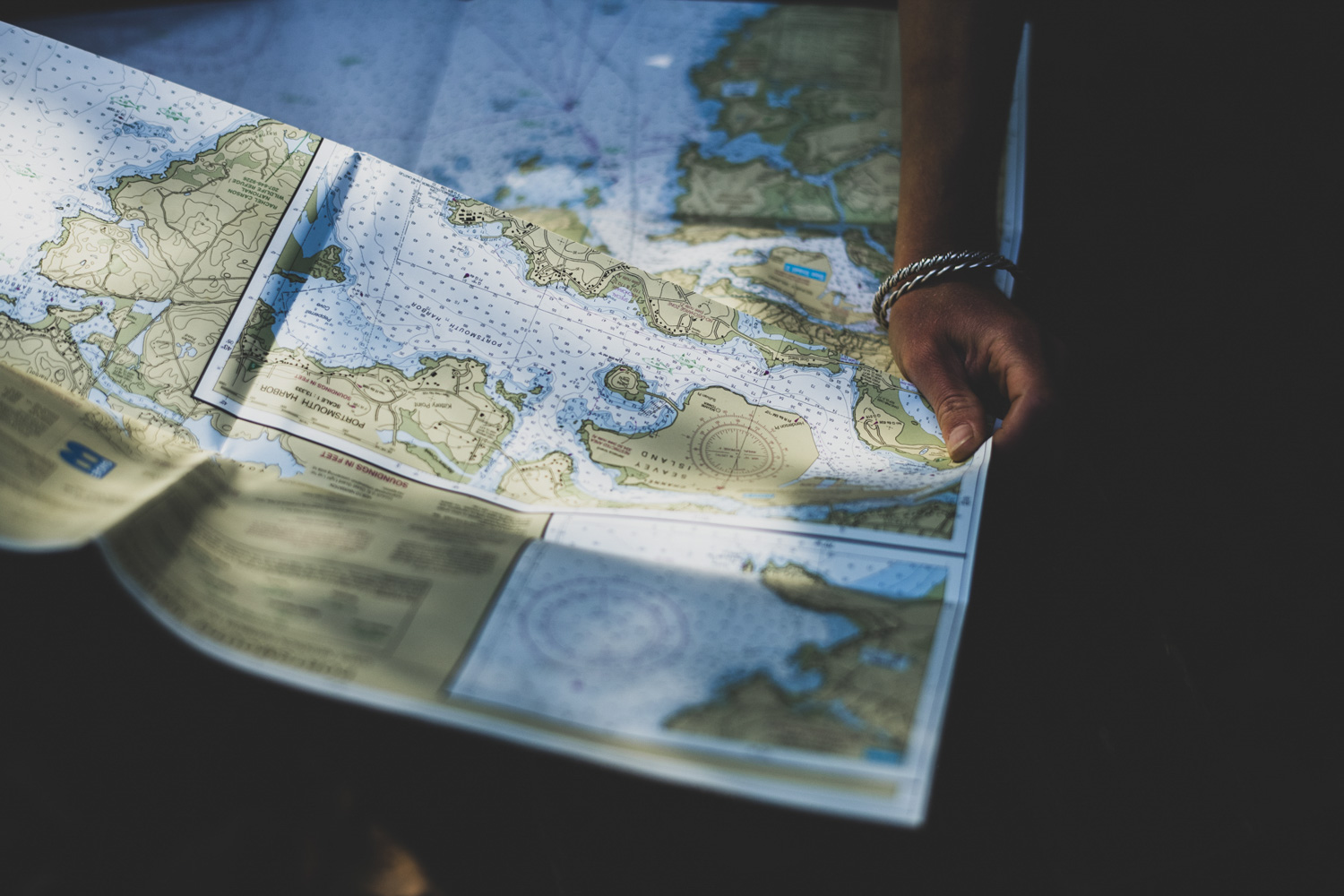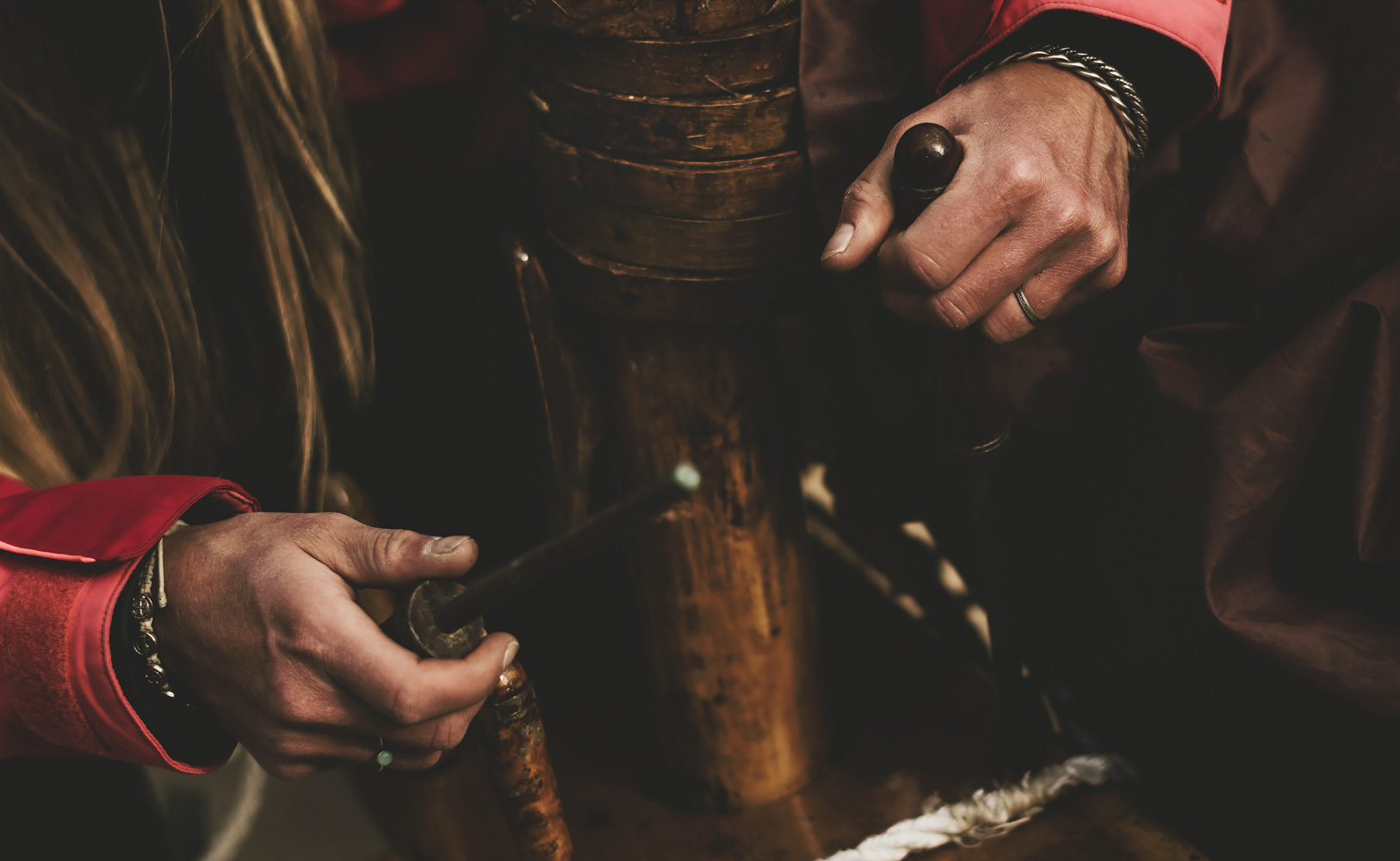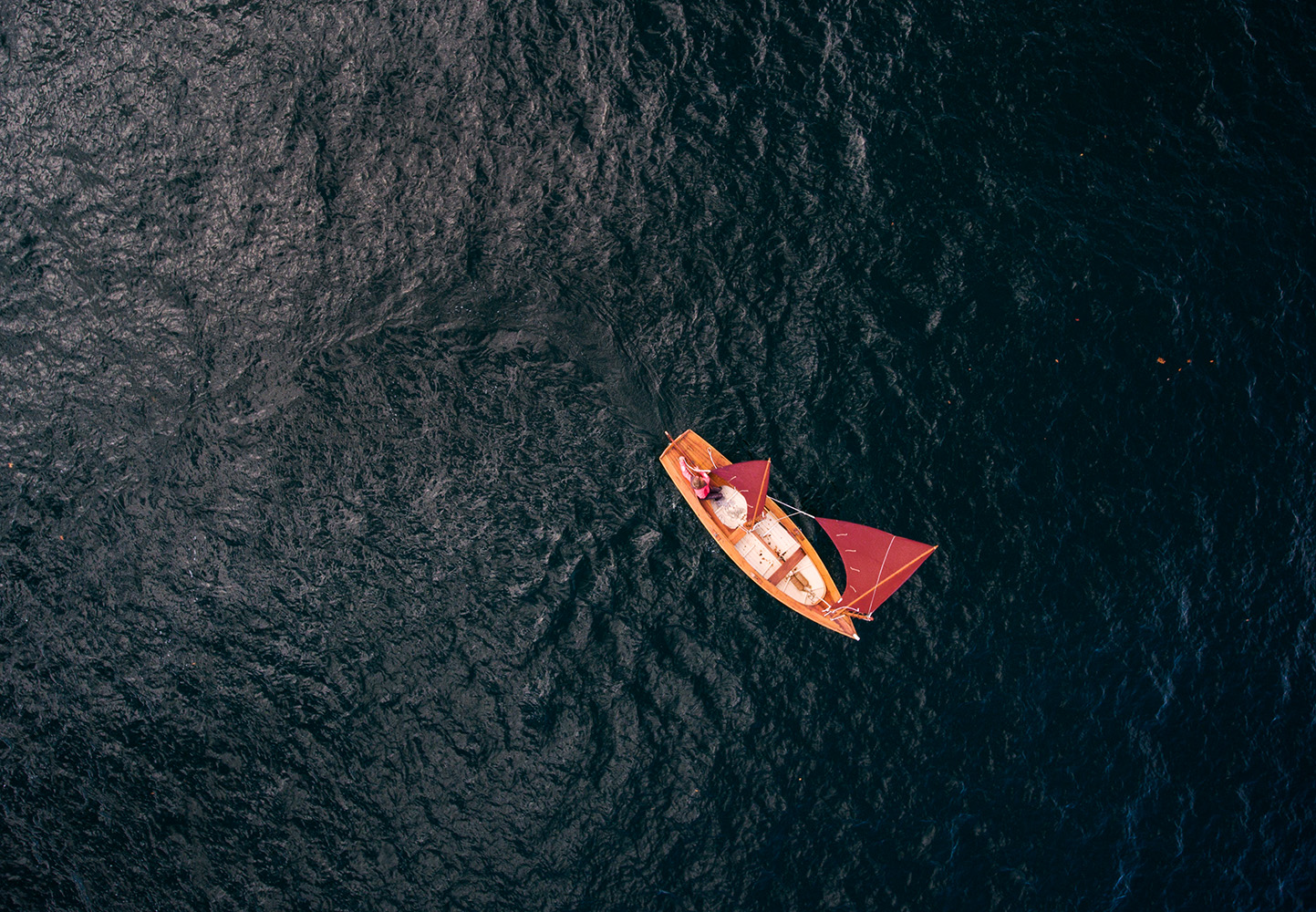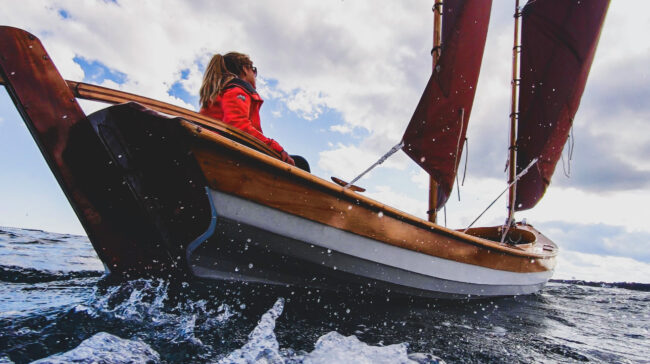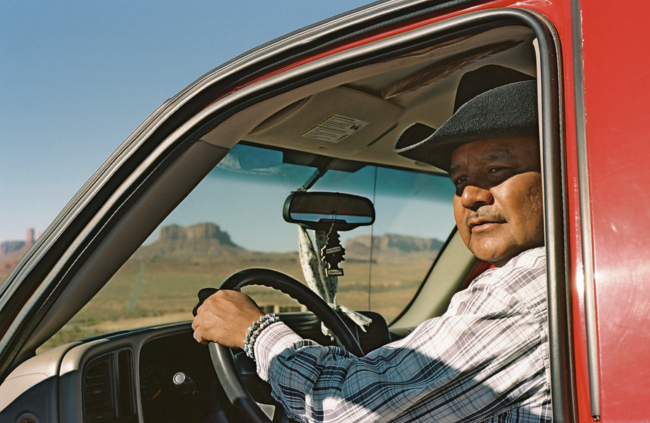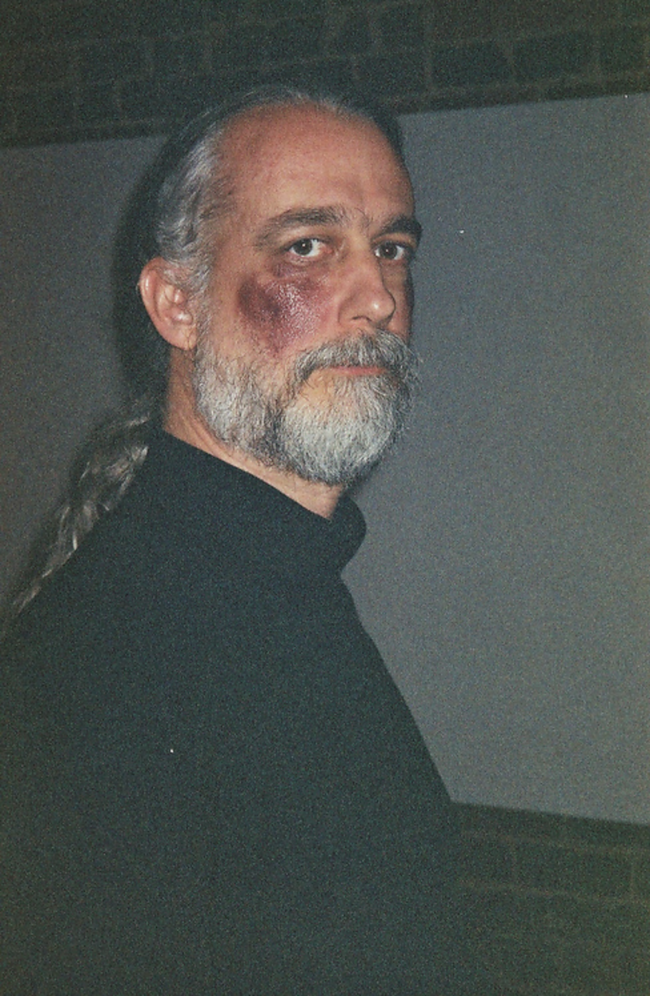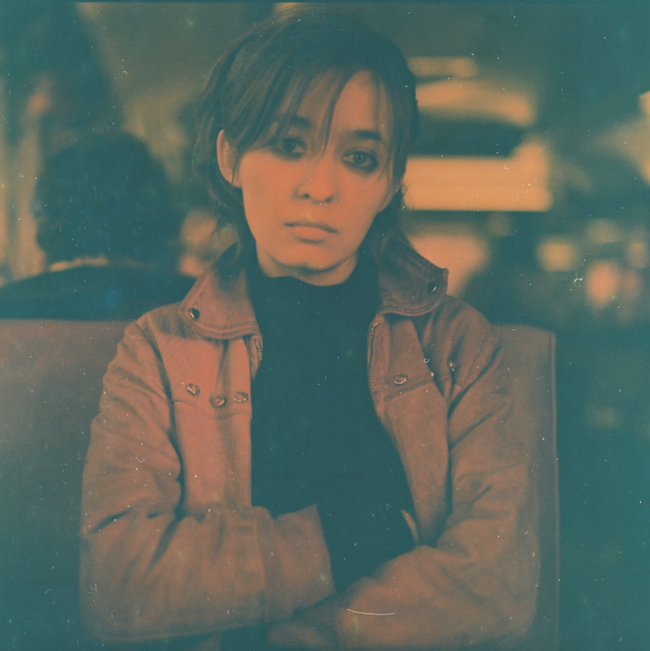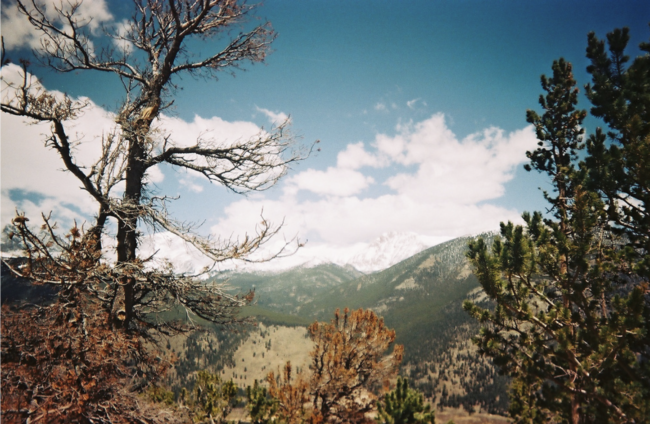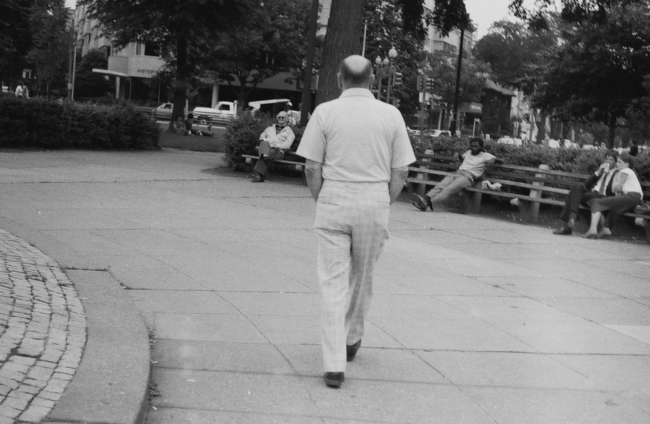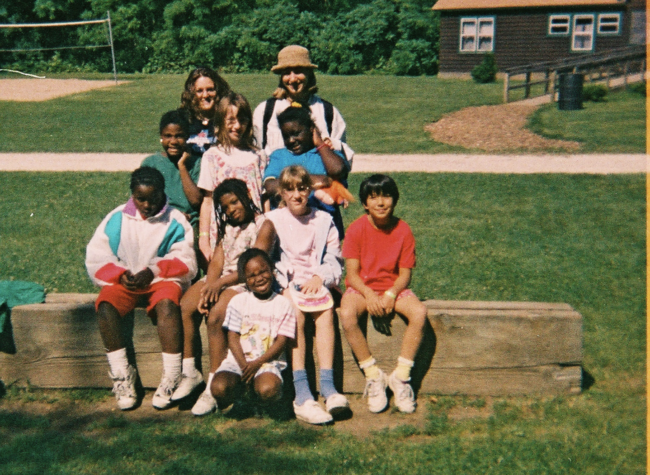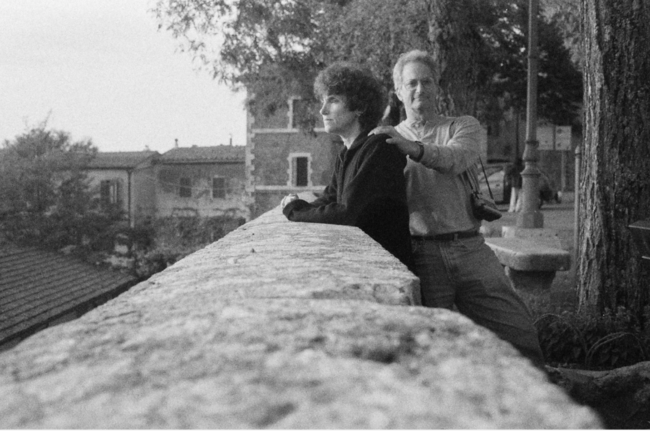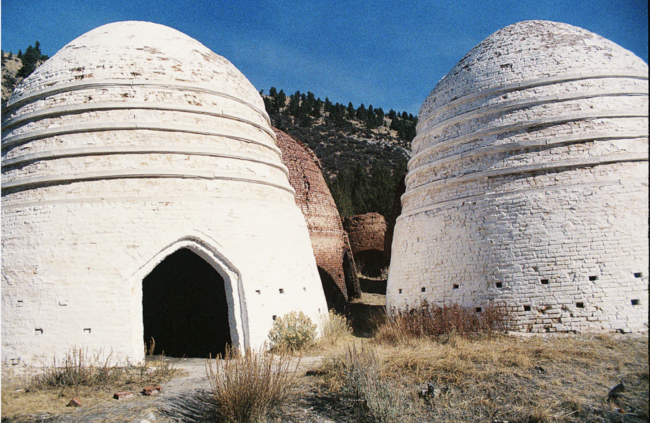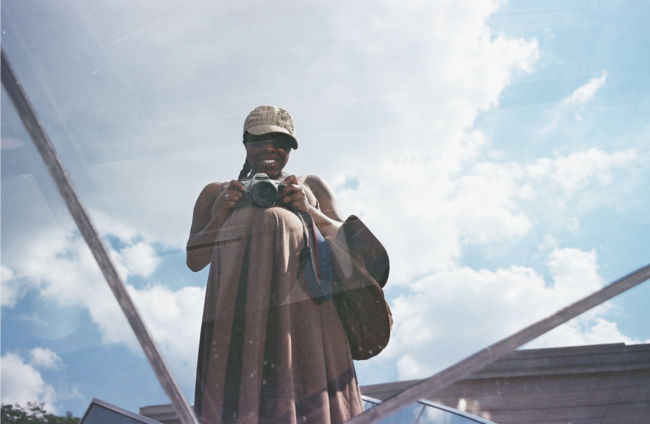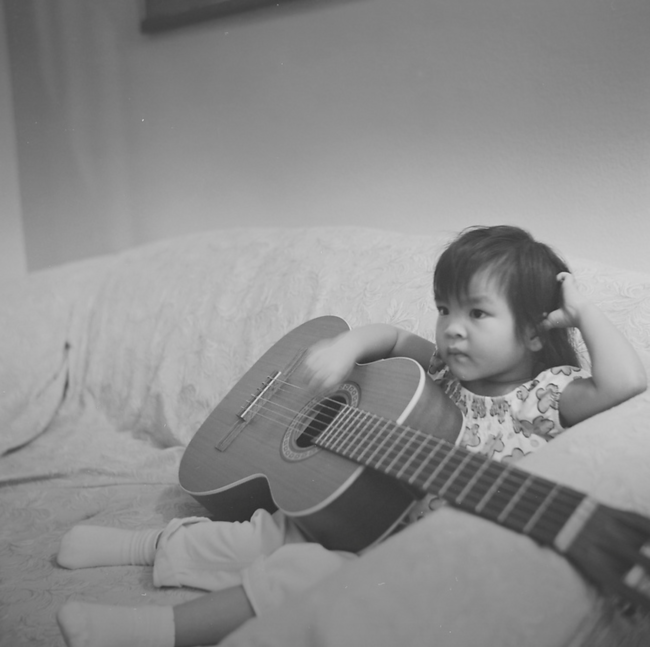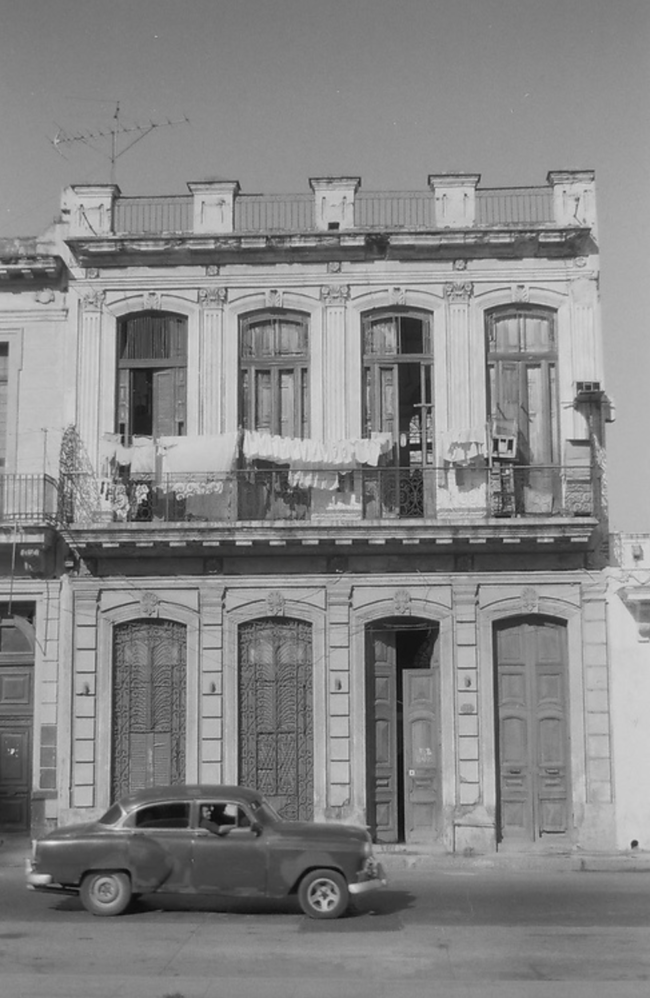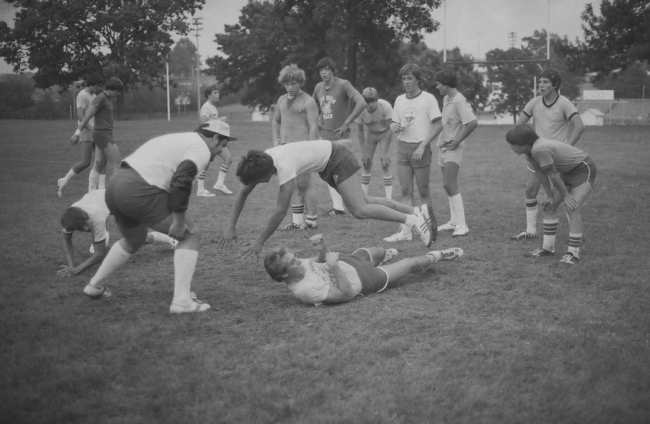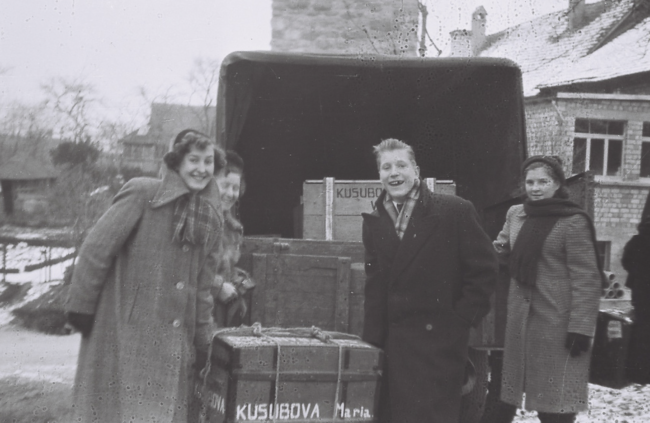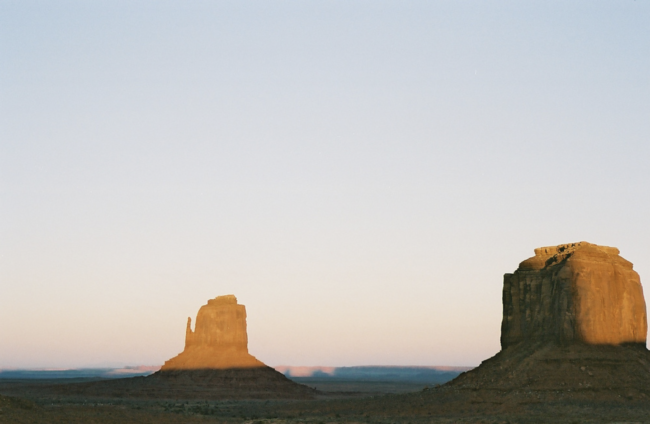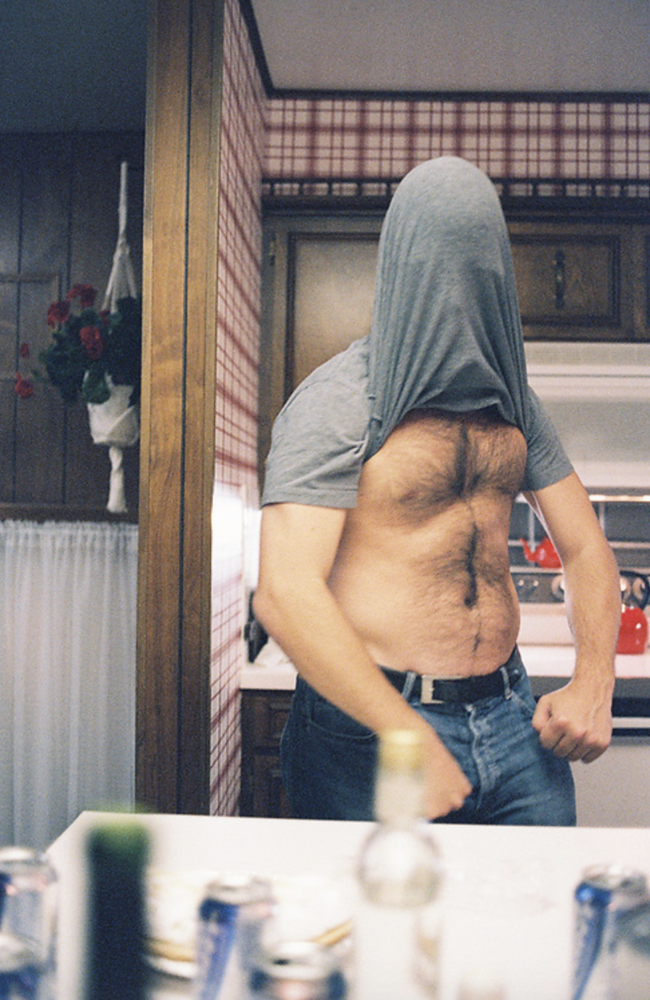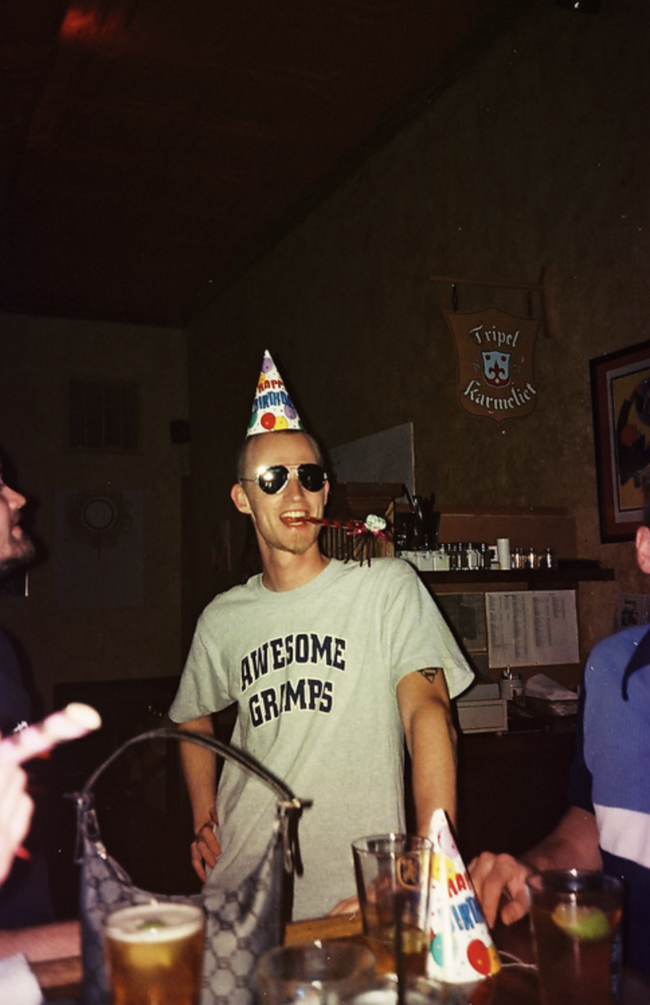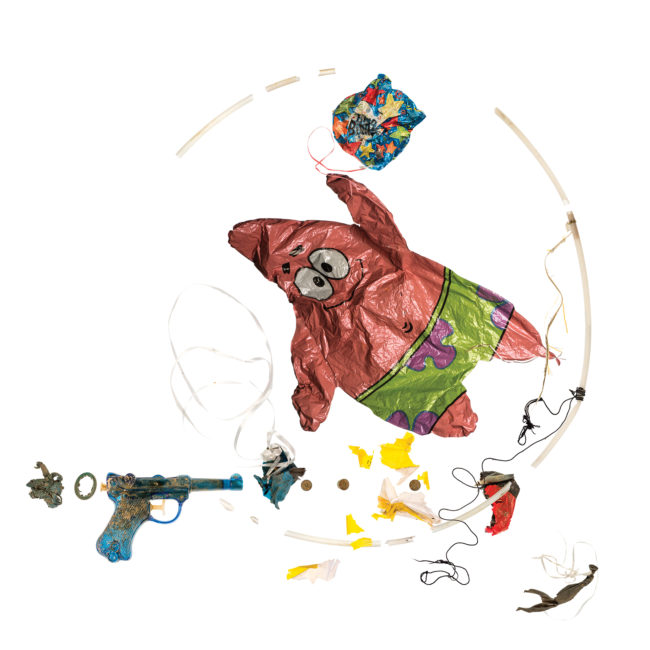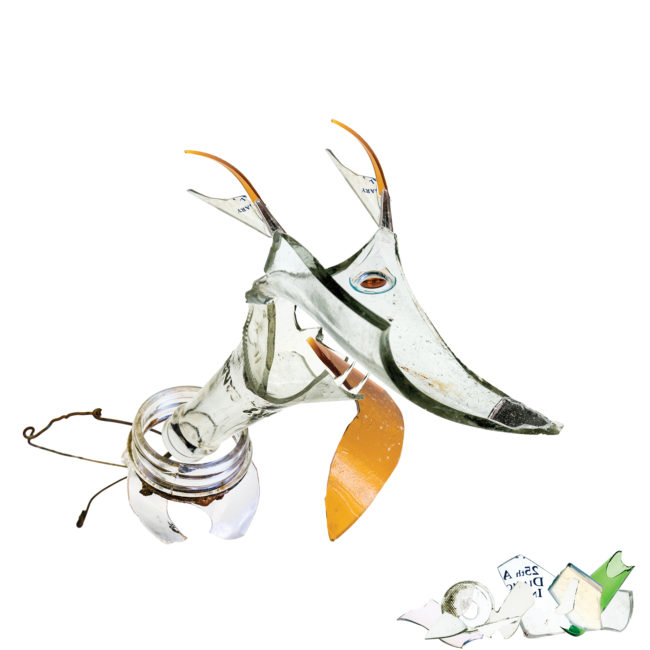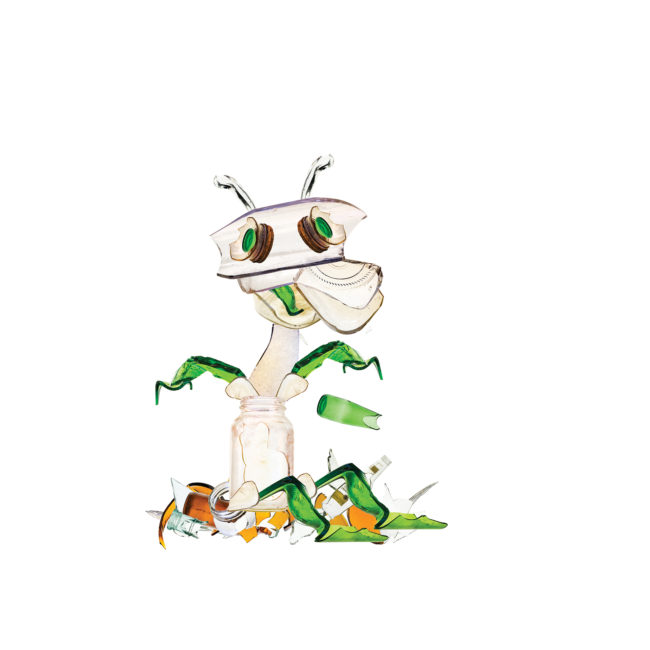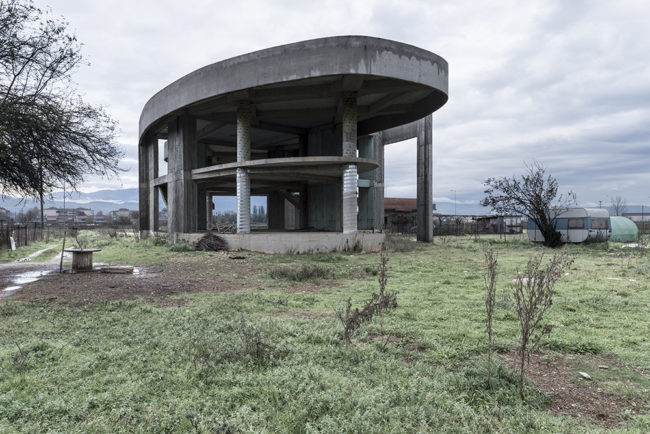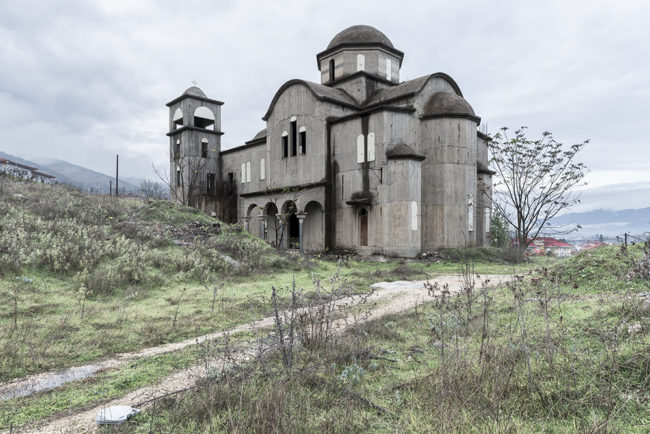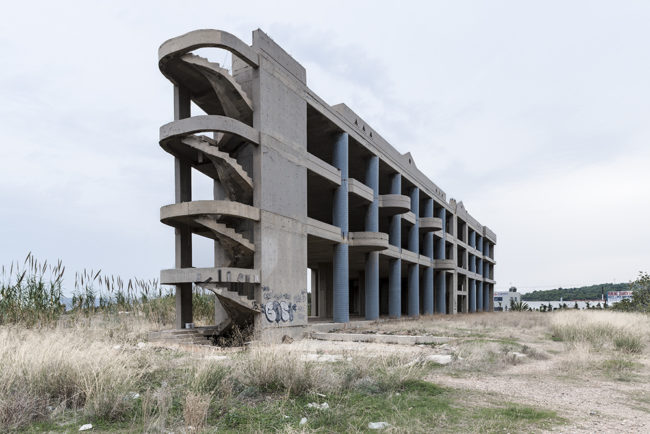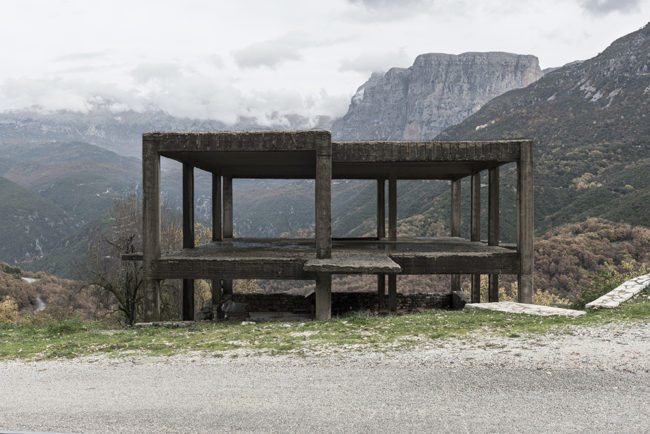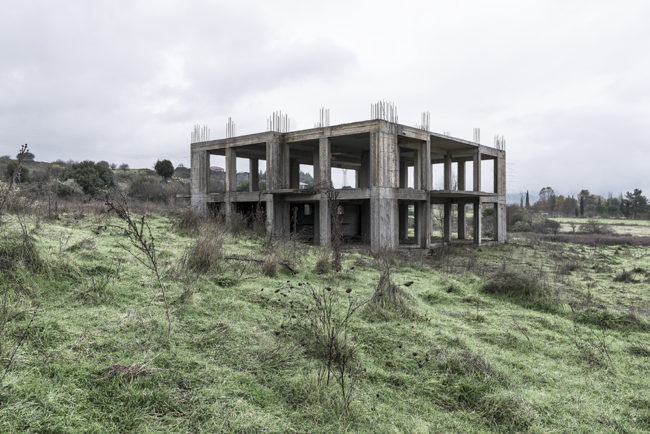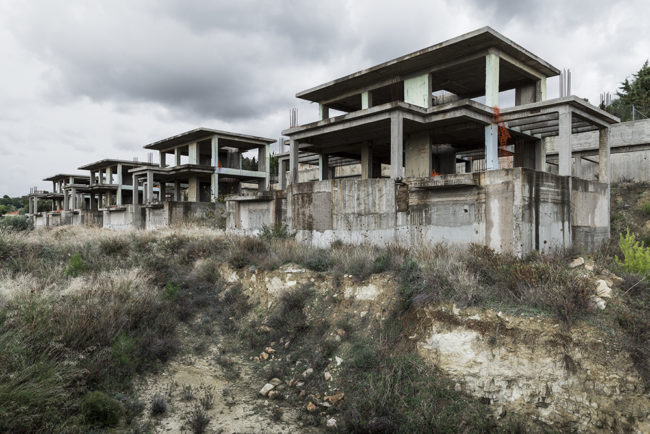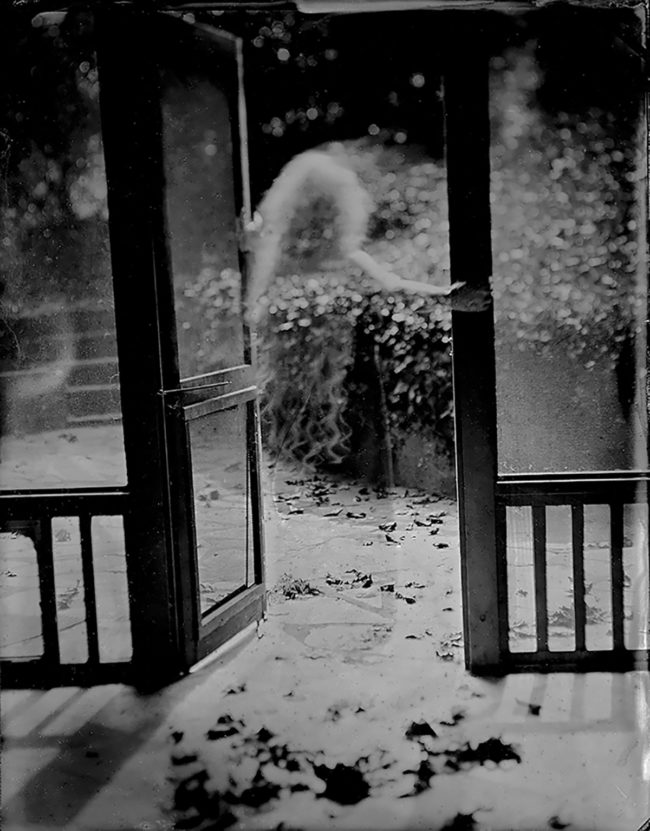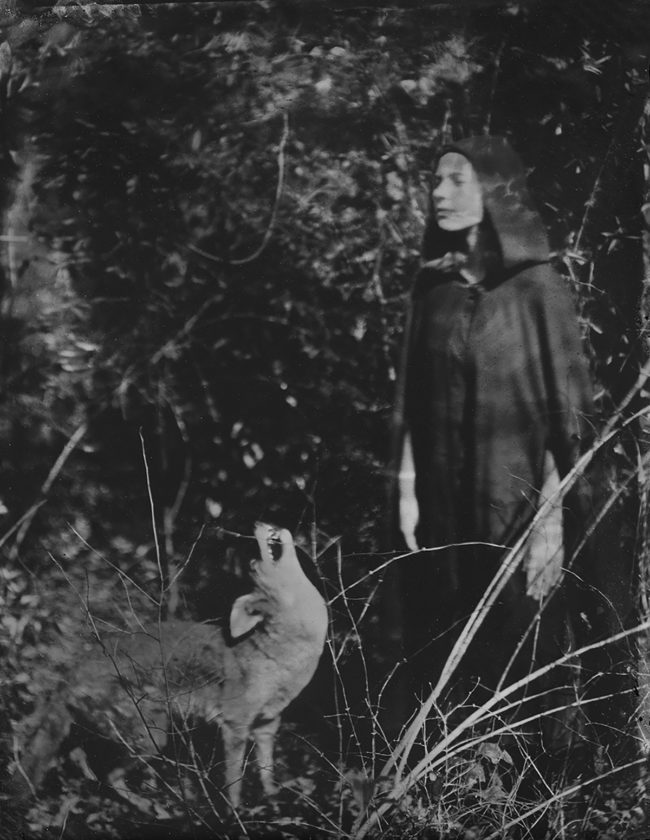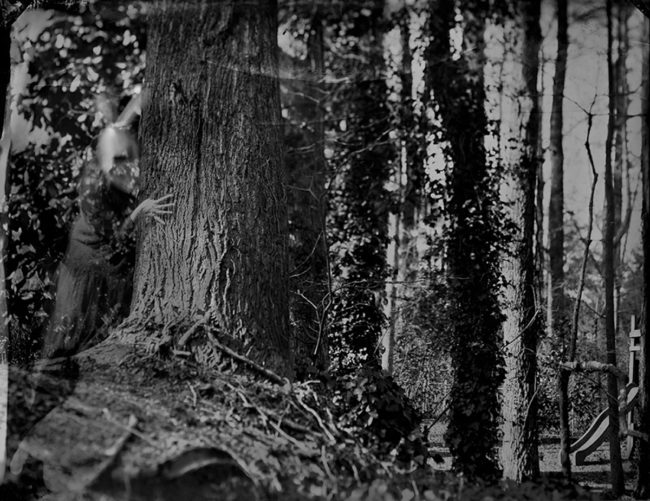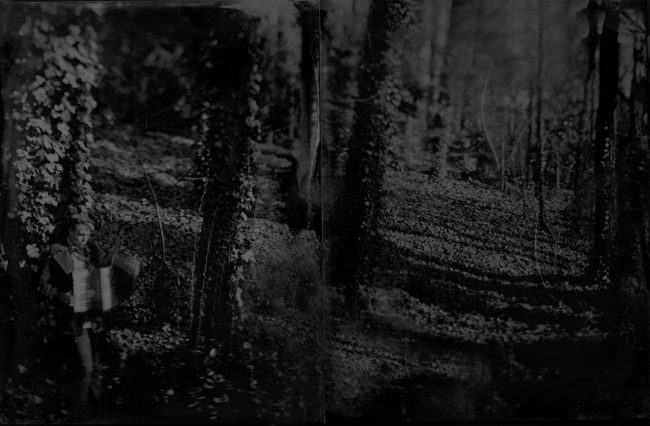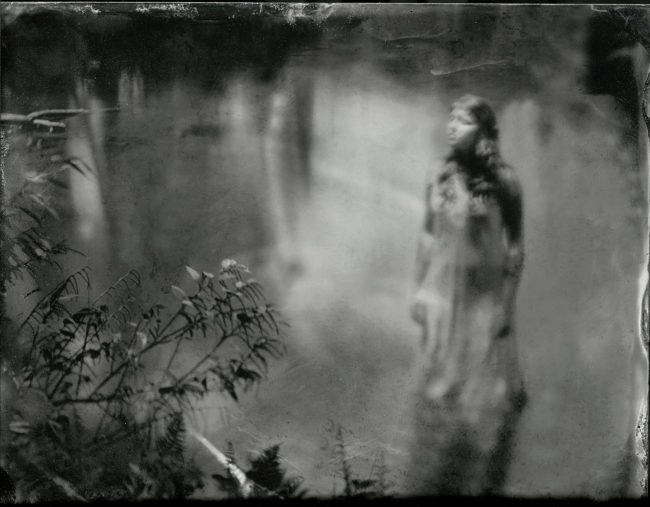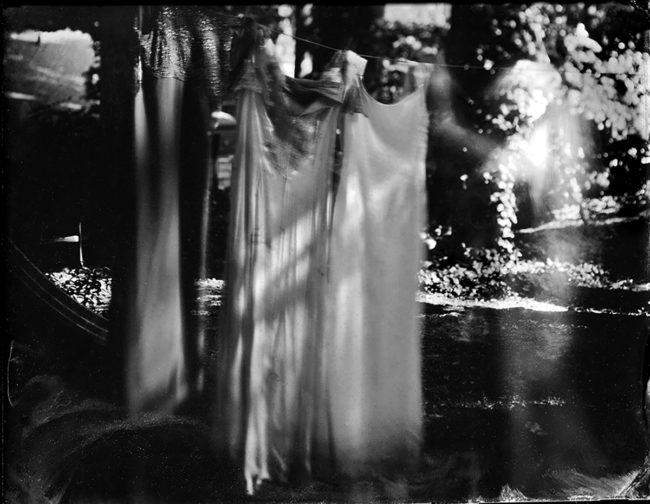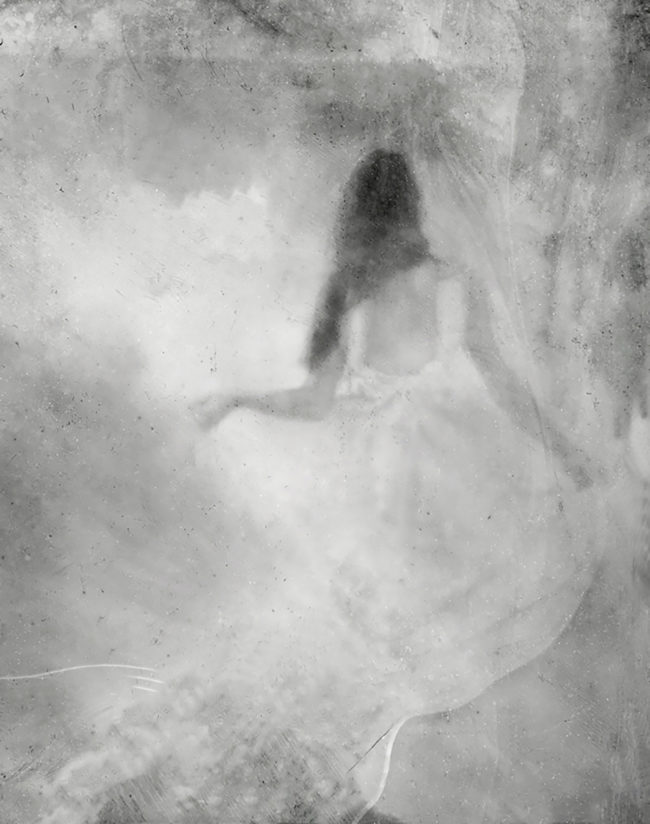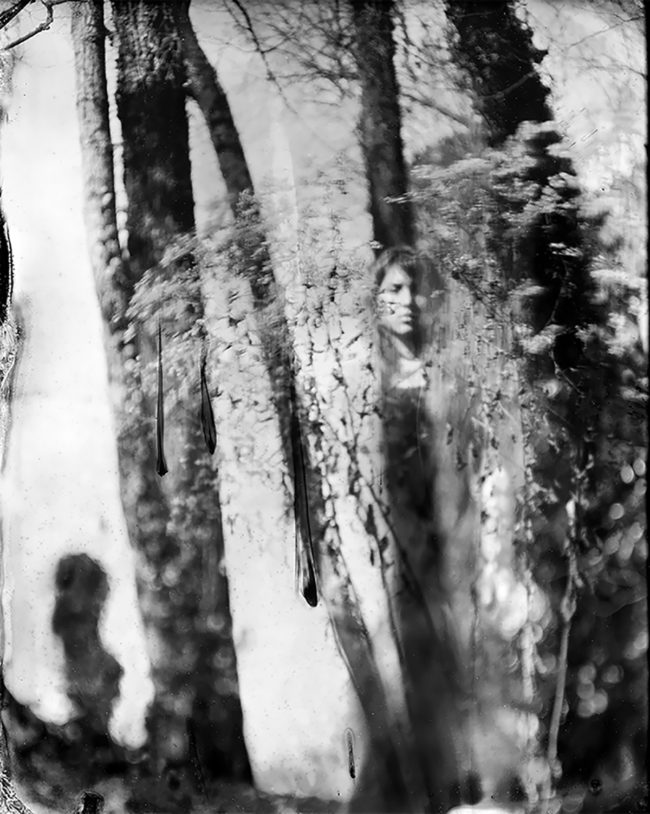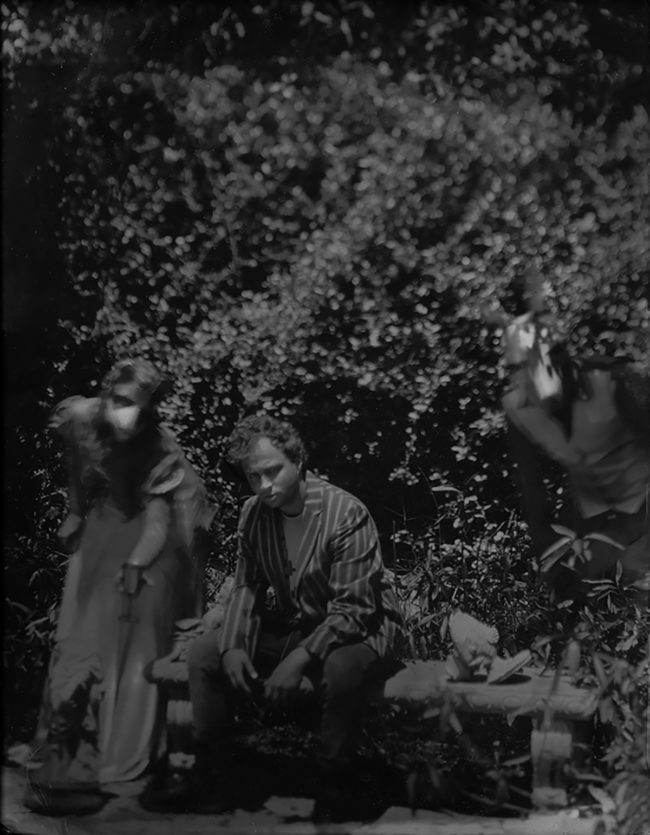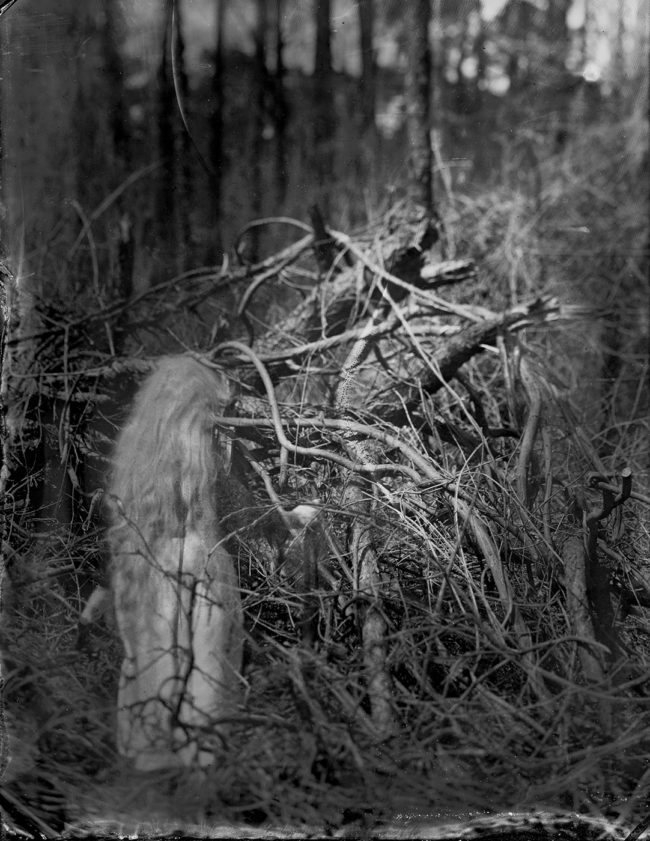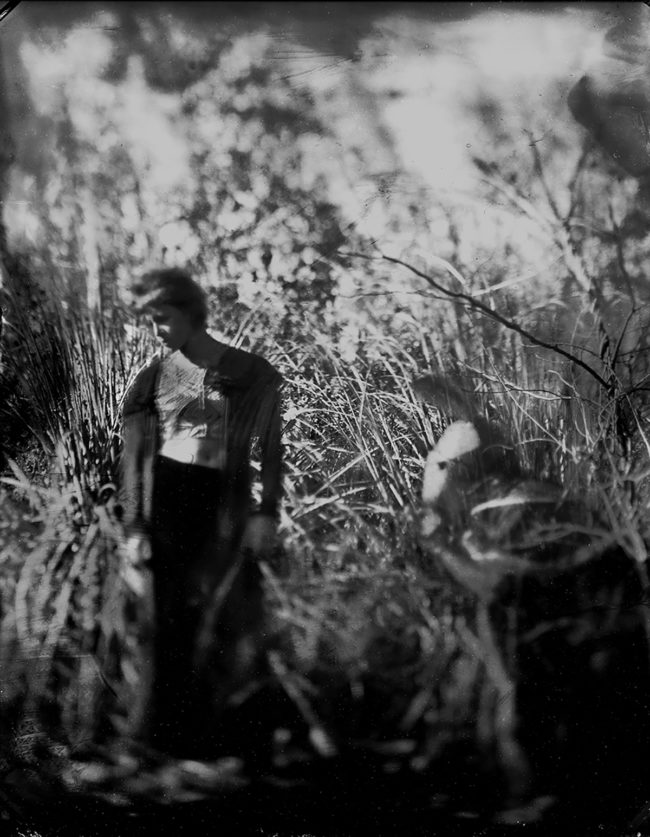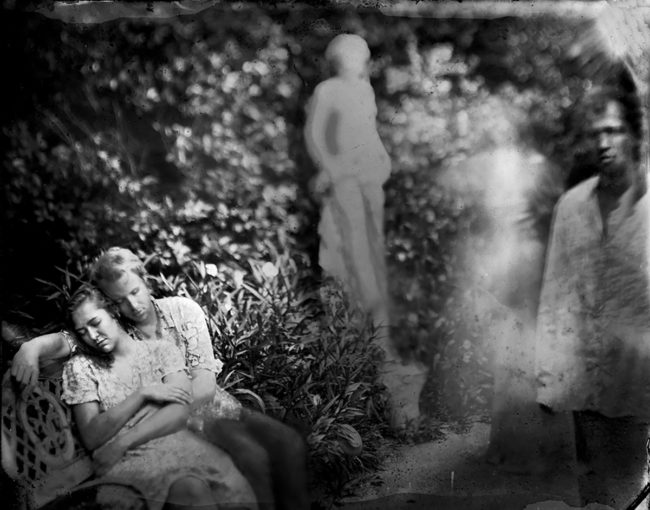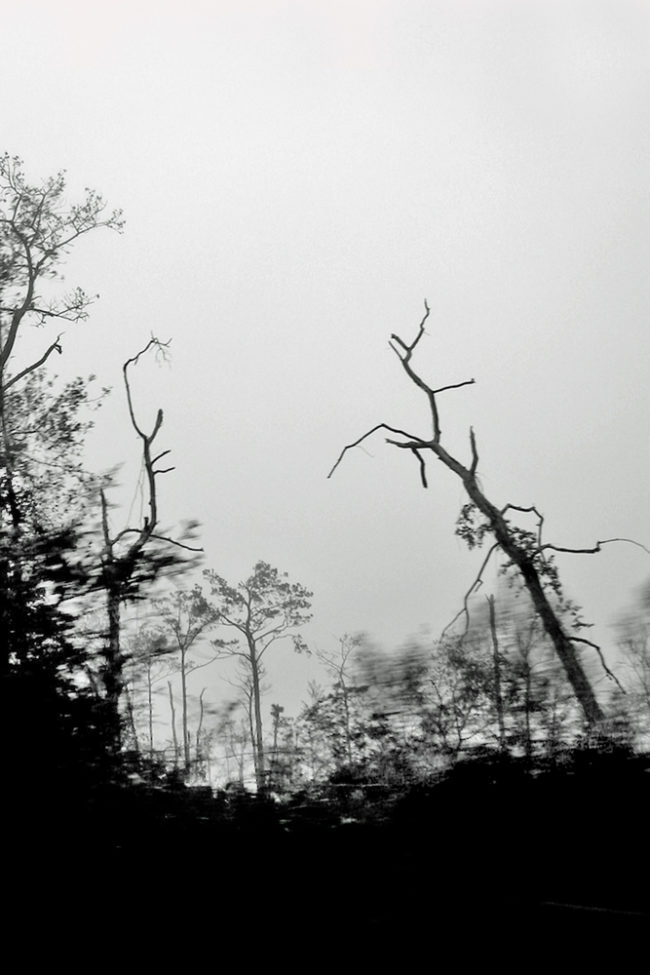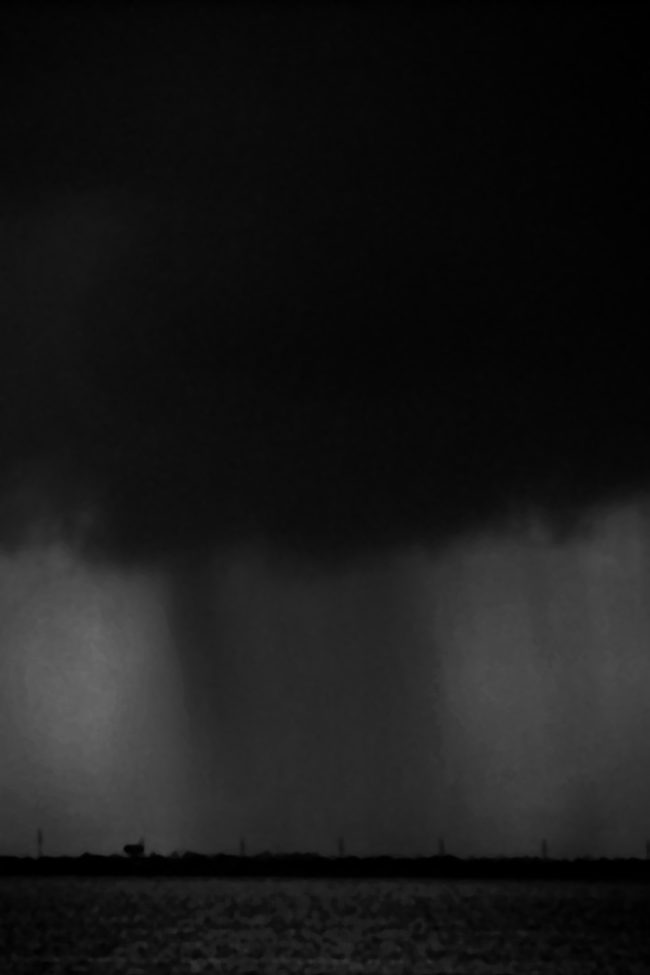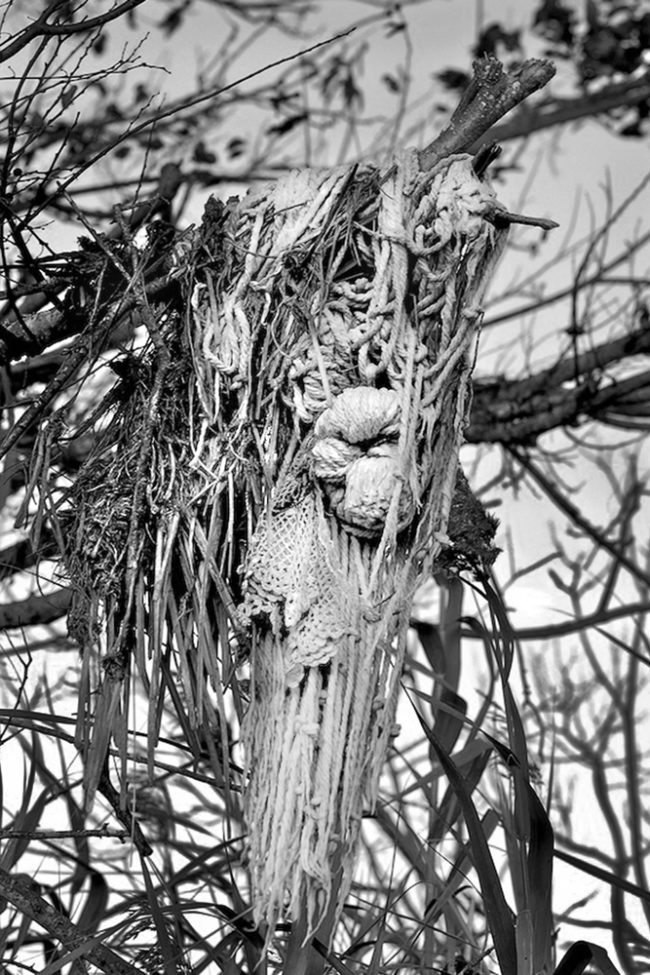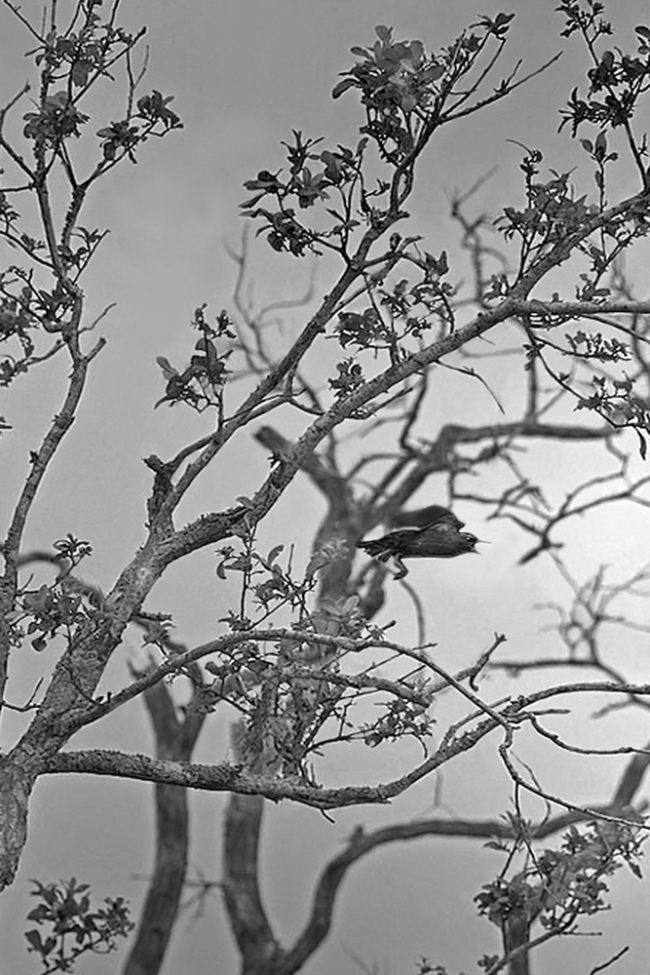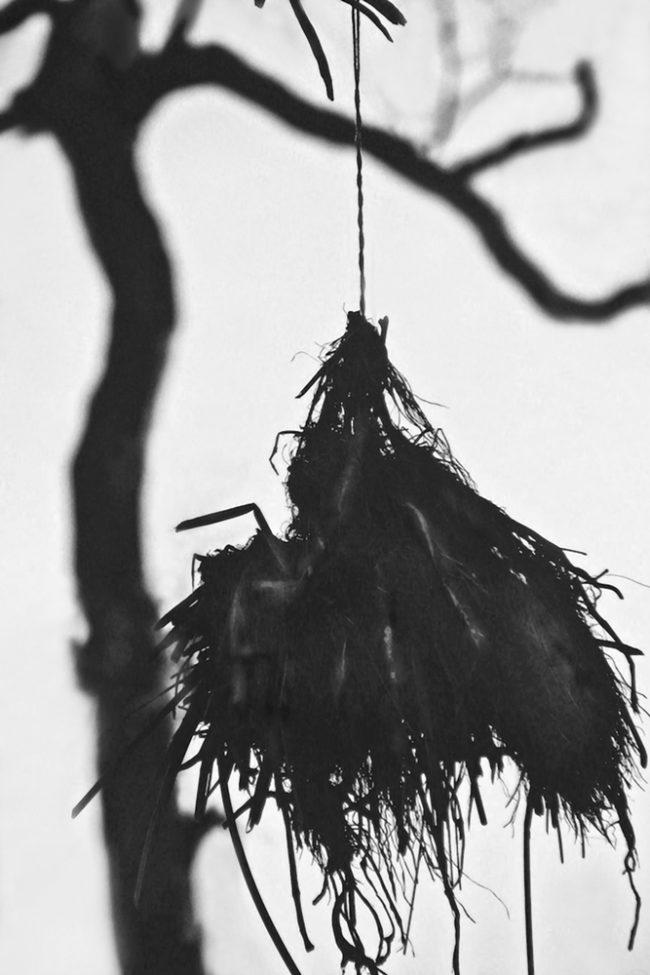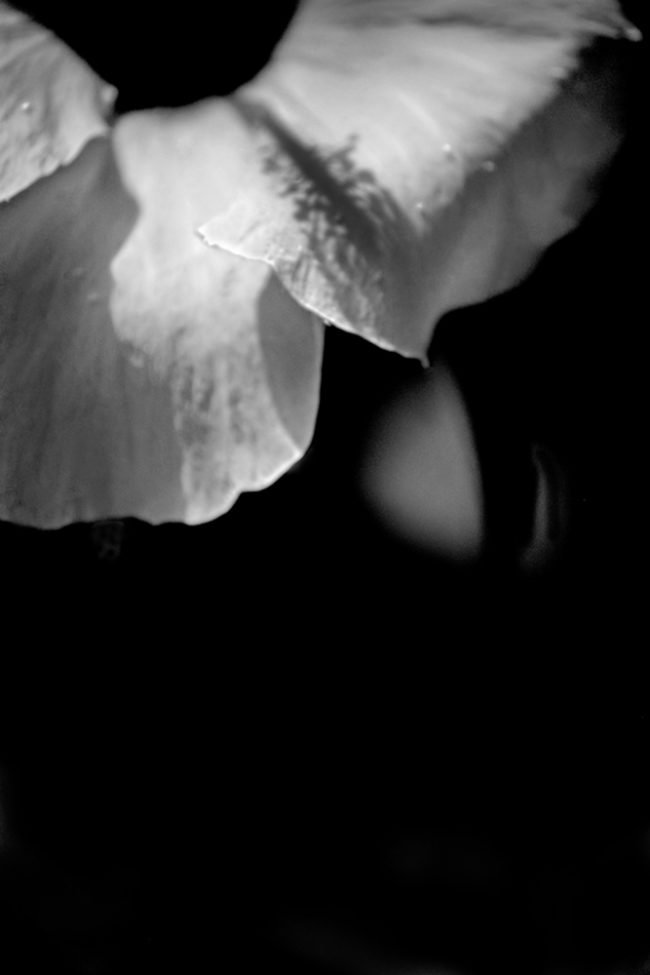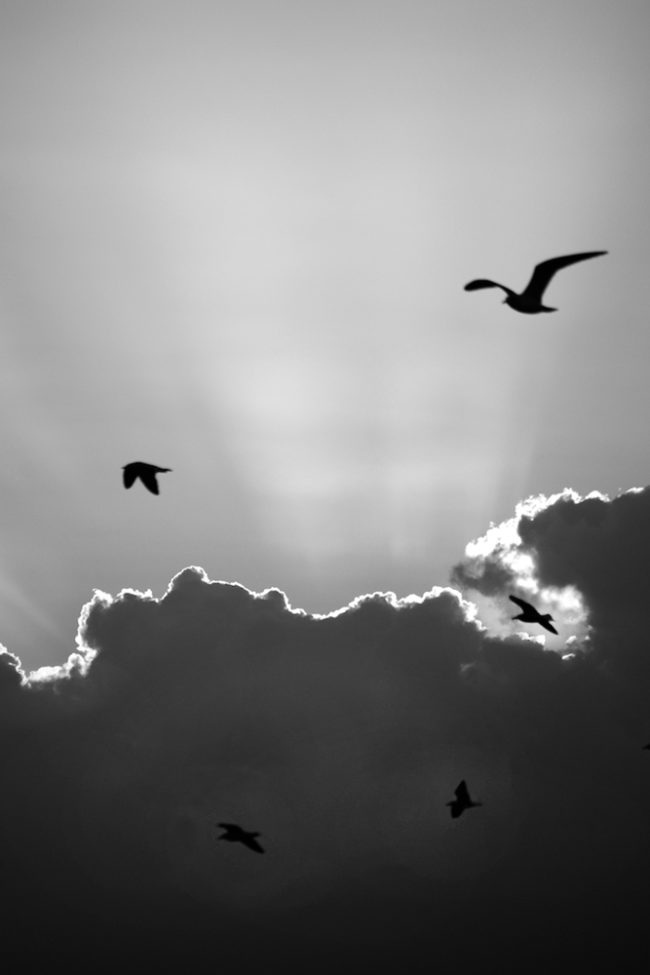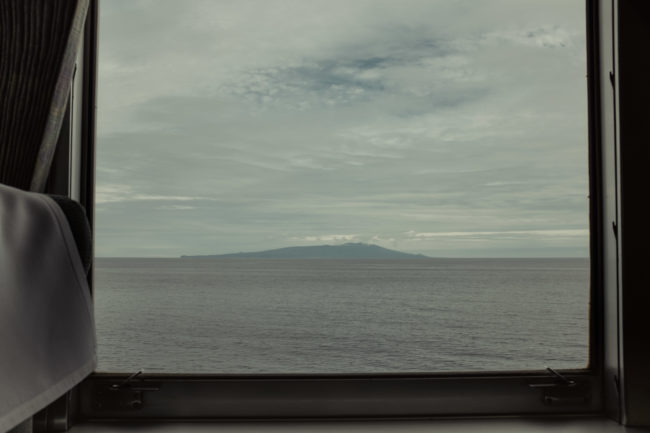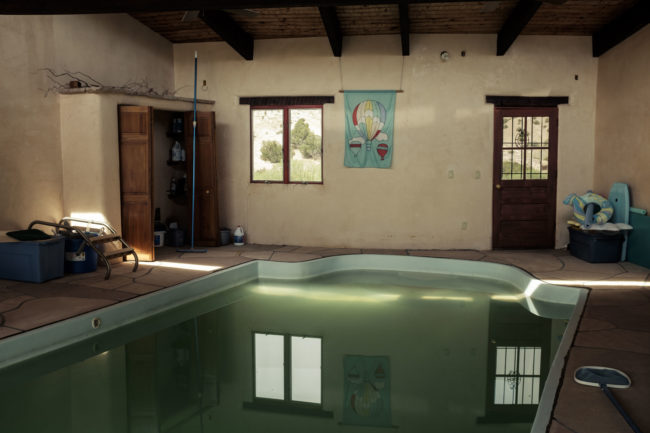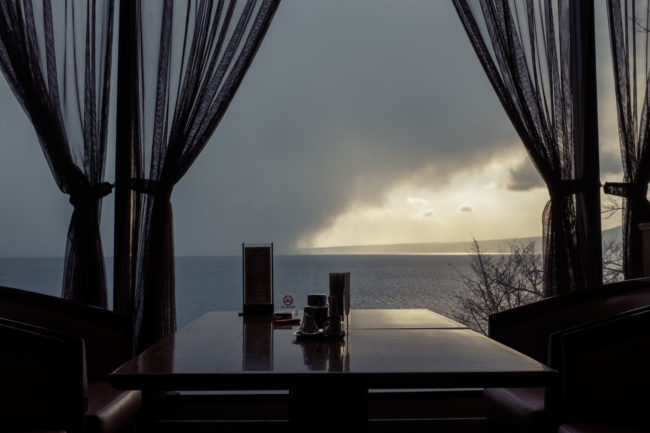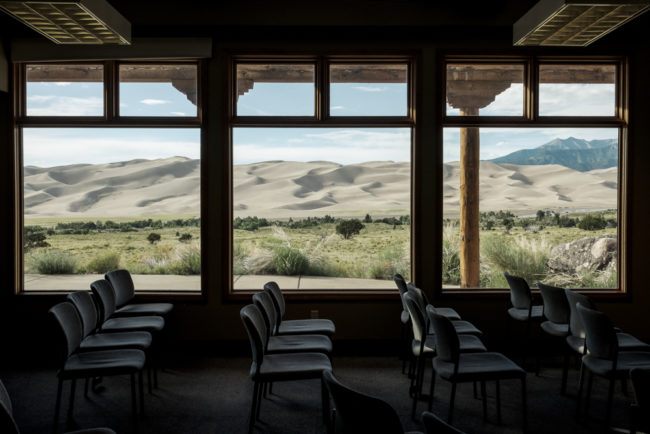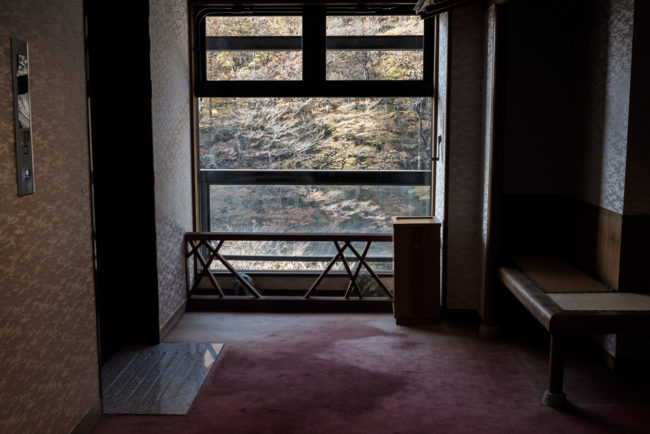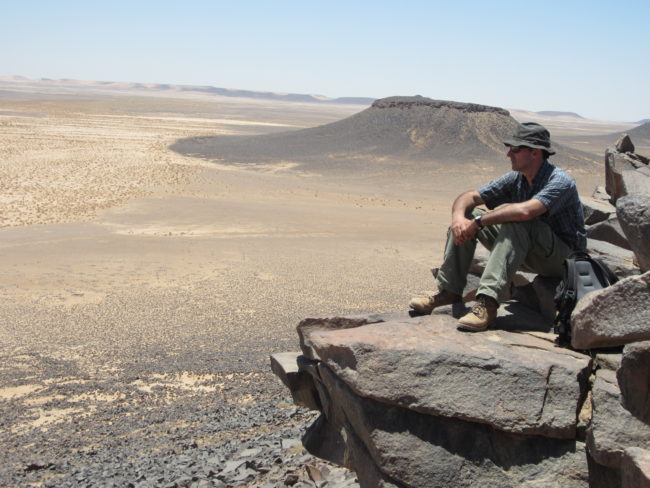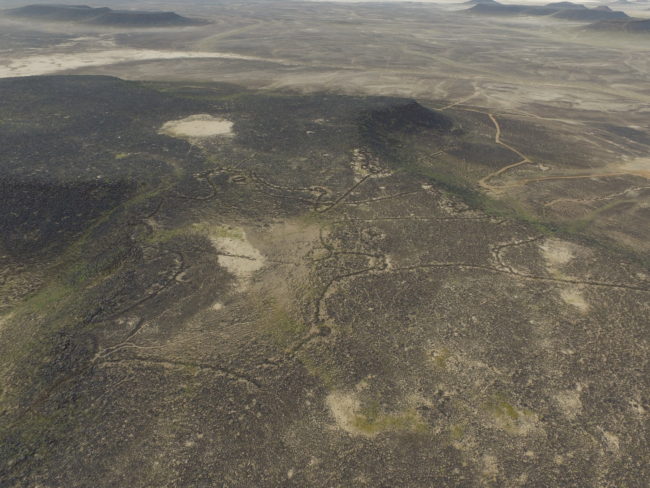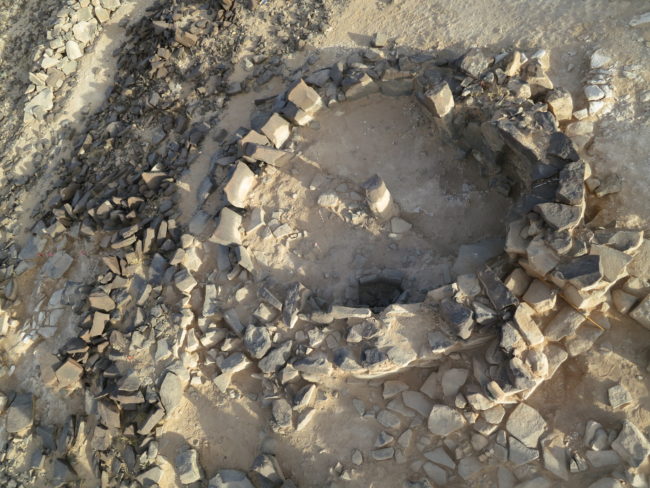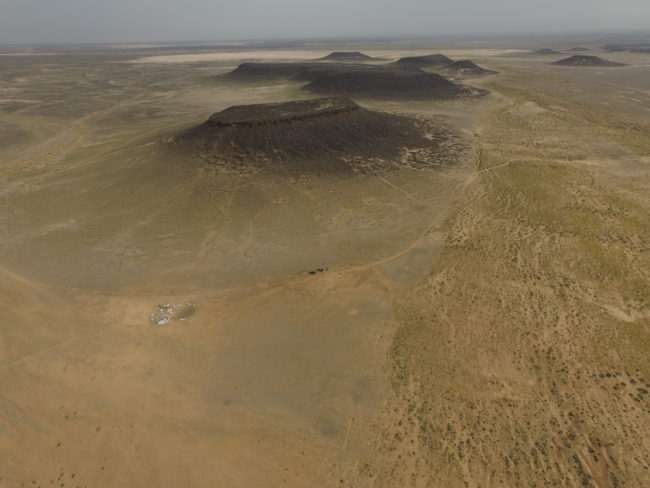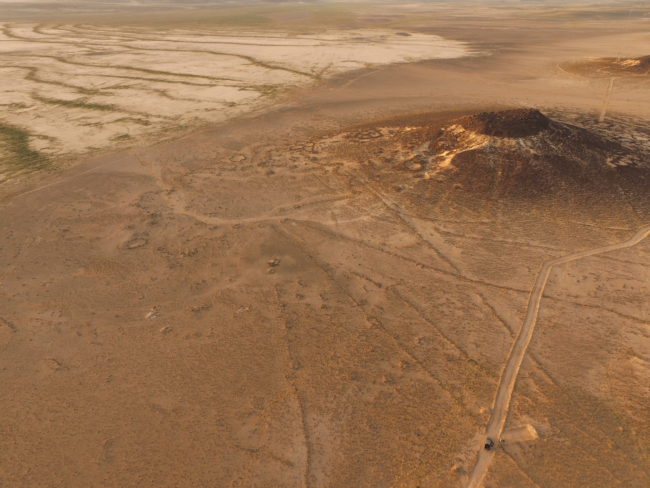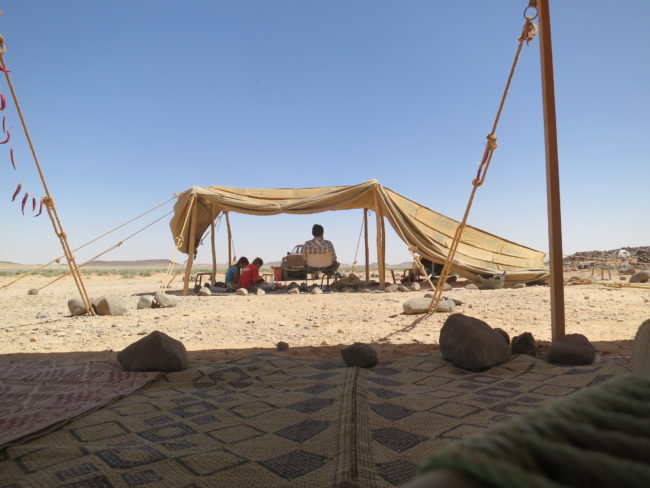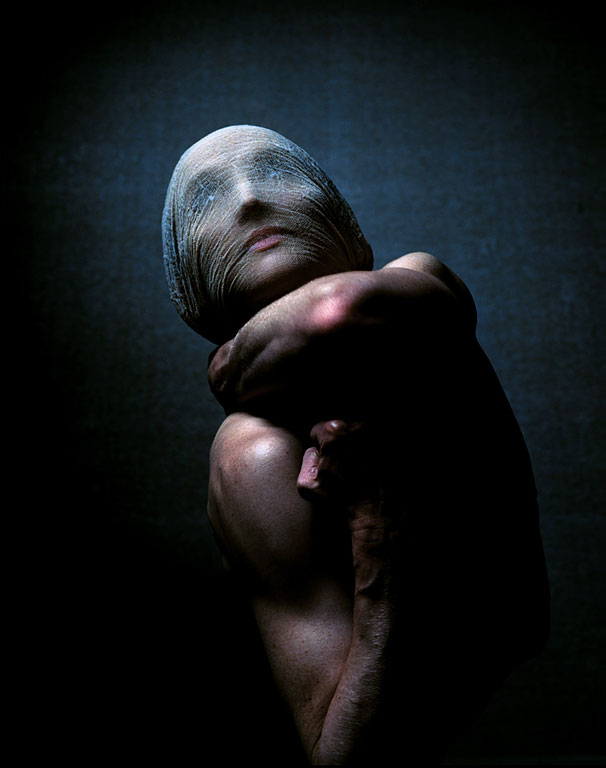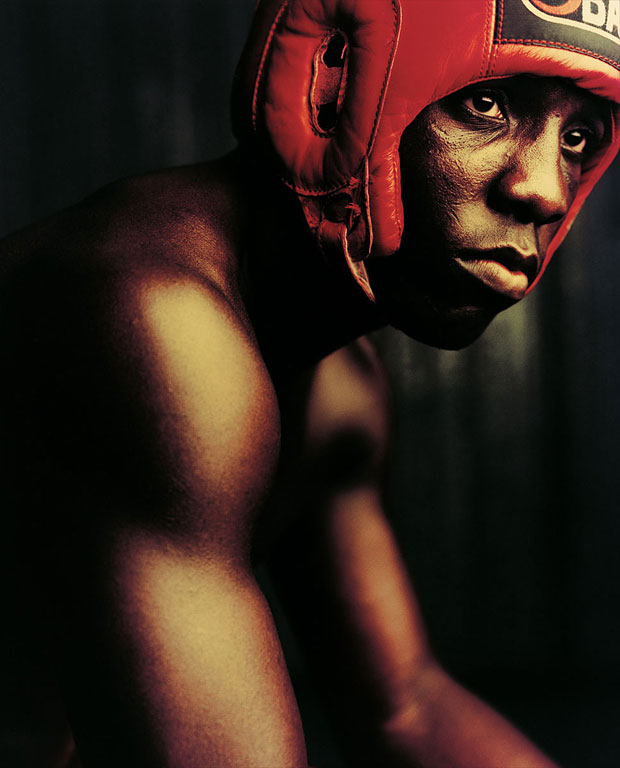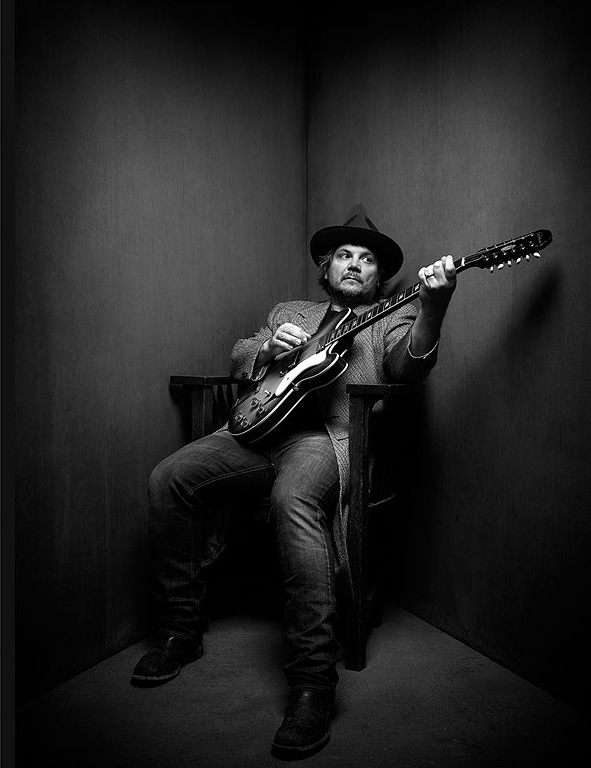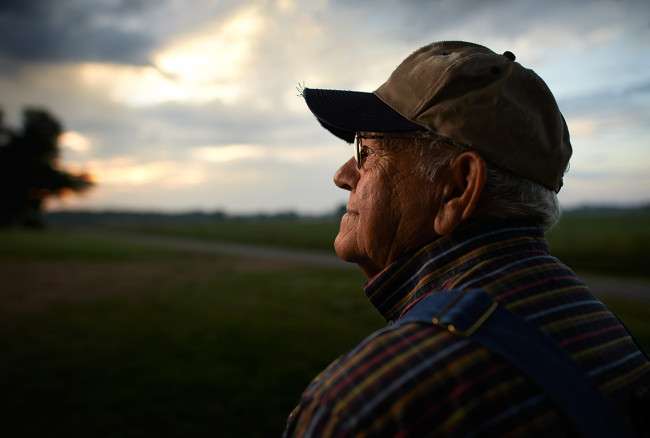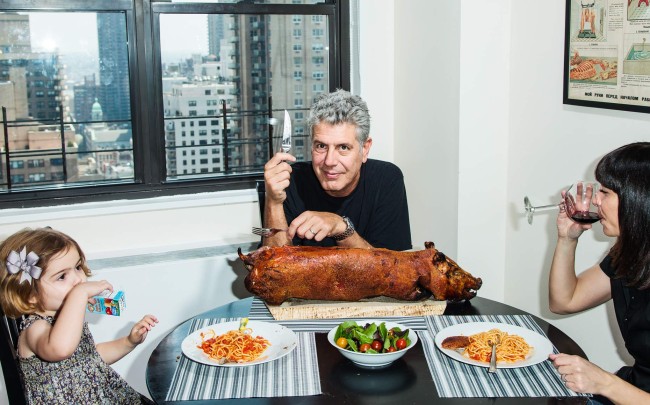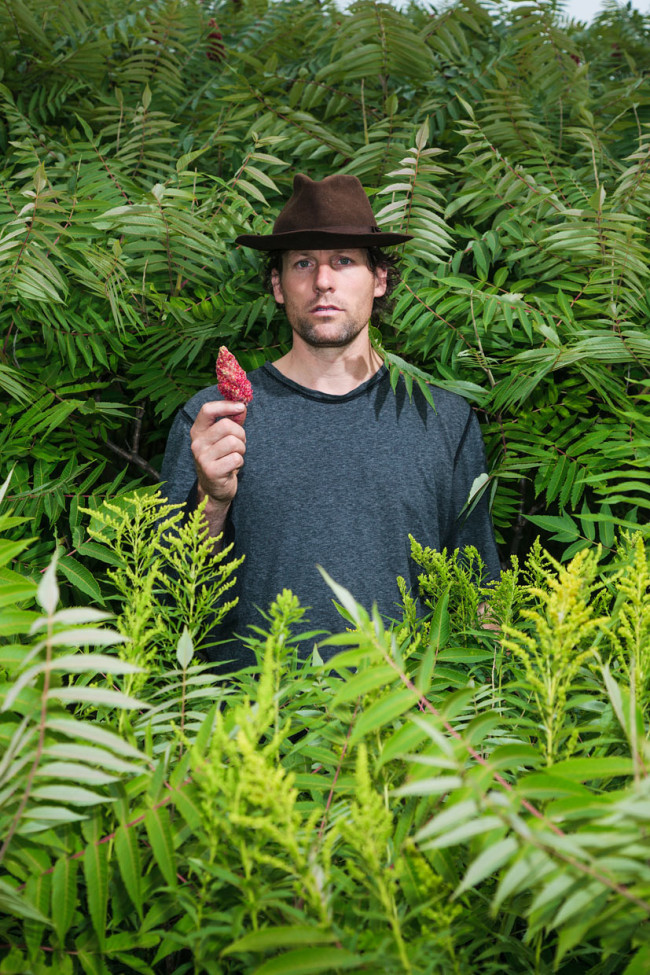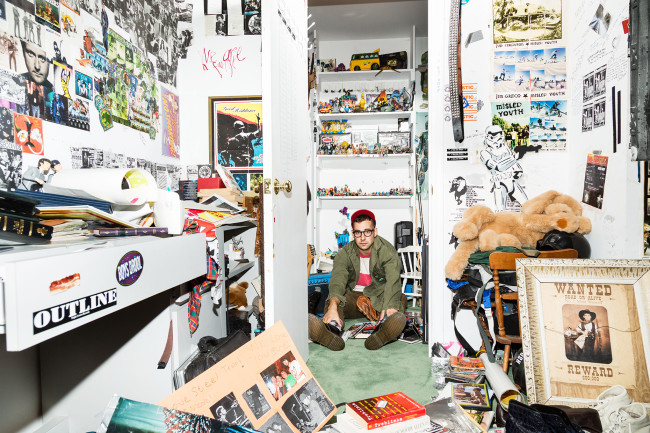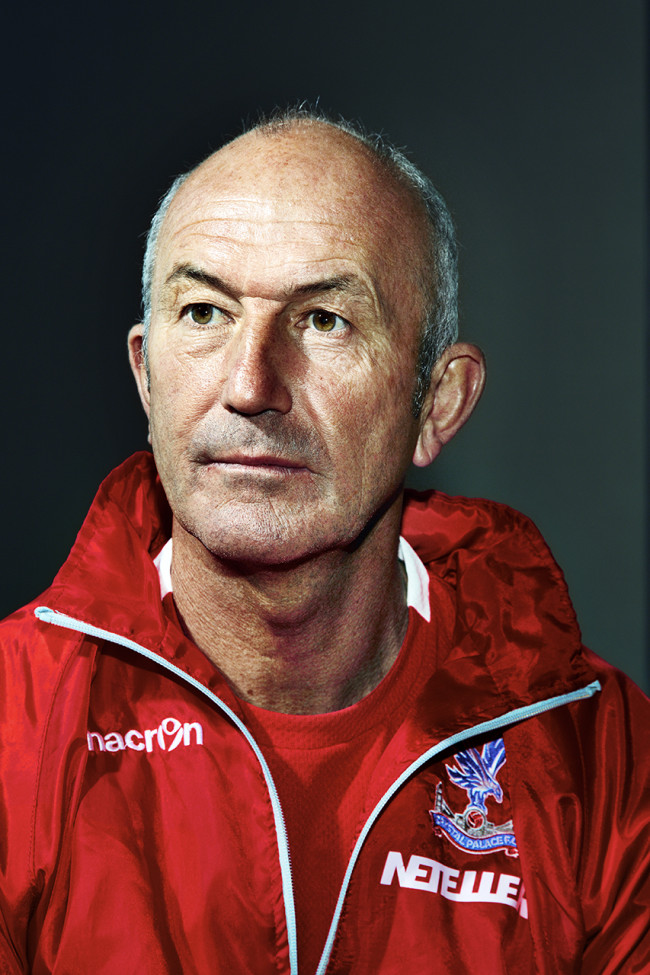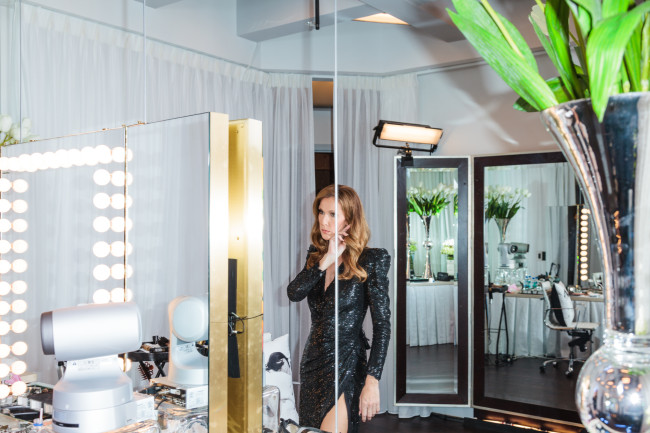Jonathan Blaustein: Your bio states that you were born in Tokyo, but your parents are American?
Sarah Silver: Yes, my parents are American. My father was teaching there at the time, but he’s been working internationally for years, and is currently based in Sydney.
I basically spent my entire life visiting him, though I grew up in Chicago. I traveled extensively as a kid.
When I was finally able to make an adult choice as what to do, I spent a year living in the Middle East, while I was studying at Vassar for my undergrad.
JB: Vassar? My wife went there.
SS: To Vassar?
JB: Yeah. But I won’t date you. If I ask you what year you graduated, I’m automatically dating you. So I’m not going to do that.
SS: OK.
JB: What was your college experience like?
SS: I was a very serious student. I spent a lot of time in the library doing homework. I think I was one of those students that took every assignment and said, “Yes, I completed it 100%.”
But every minute I wasn’t studying, I spent in the darkroom at school. At the time, Vassar didn’t offer a photography department, so I pretty much created classes and taught them to students. While spending every waking free moment printing.
And inhaling chemicals.
JB: Which may or may not have anything to do with your…
SS: …current state of mind? My grandfather was a baby photographer in Michigan from the 50’s through the 80’s. He had a darkroom in his basement, and my earliest childhood memories are of printing with him.
He would show me how to vignette baby photos. My coloring books, all through growing up, were black and white pictures, and I would take the oil pencils to draw onto them. He showed me how to change the color of things. I always though it was fun to make the colors unrealistic.
When I told my grandmother I was going to become a photographer, the first thing she thought was, “Oh God, not those stinky chemicals.”
JB: (laughing) Little did she know, the digital revolution was just around the corner.
SS: When I was coming up through grad school, I had the choice of going straight digital, or keeping with film. It was still that time when you could have a choice. Now, it’s not even a conversation.
I was a big nerd anyway, so the digital darkroom was something I was always a fan of. Luckily, no chemicals for me.
I went to grad school at SVA, and spent all the rest of my waking hours printing color. Which is really fun, except you’re completely in the dark.
JB: I feel you. I did a stint in a chromogenic darkroom as well. And what about after school? How did you get into fashion in particular?
SS: I started working as a photo journalist in the Middle East. That year abroad, at Vassar, I worked for a not-for-profit organization in Israel that would send me all over the country, and abroad. I spent some time in Ukraine, shooting all of these projects they funded.
For instance, I went to Ukraine to shoot a federation of Jews from the US who came to see where some of their ancestors had been saved by righteous gentiles during World War II. We visited the now-defunct Jewish community where they came from. It was pretty awesome.
I loved working as a photojournalist, and was honored that I didn’t even have a portfolio, but the company that I worked for just cared that I was coming from a place of interest. It was basically how I built my portfolio.
I had no experience in photography. I have a degree in Middle East studies from Vassar.
JB: Right.
SS: Which is awesome. But it’s not a photo major. So after I graduated, I went right to SVA, which was the best decision I ever made. Because not only was I learning all the technical stuff that I had missed, but I also got a full Masters of Fine Art, which has all the trappings of art, film and history. All the things I think me a better visual thinker now.
JB: Absolutely.
SS: I would never trade the MFA for anything. I’m a proponent of education. First of all, you should never stop learning. You don’t need a degree to be a photographer, but I loved it.
JB: Hearing your background, it sounds like you took the long and winding road. But now, you’re in an exclusive niche in the industry, working with fashion, that most people don’t know that much about…
SS: As much as I loved Middle East studies, my other passion was Dance. Although I am a severely challenged and failed dancer. I took ballet for a long time. In fact, tomorrow we’re shooting this company that I’ve been shooting since grad school. I still shoot the same company I did my thesis on, every year.
I love movement, and I think that fashion and movement are best friends. Clothing becomes alive, and the model becomes energized.
When I was finishing grad school, my focus was on the history of dance photography, so it was a really easy transition. It has trickled down into everything I do.
I do “movement hair” in hair shoots, and “movement beauty,” in beauty shoots, and “movement fashion” in fashion shoots.
It brings energy to a picture. If you can hear the “Boom! Bang!” sound of the energy coming through, that’s always moved me.
JB: I had a sneaking suspicion, and it even made it onto my question list, as to whether you had a background in dance. So I’m glad you answered that for me.
Before we move on, though, I have a technical question, even if it makes me look stupid. There always seems to be a distinction between beauty and fashion, but I don’t get it. Is it just that beauty represents close-up portraiture, and fashion represents stepping back and showing clothing? Is it as simple as that?
SS: It can be.
JB: So what’s it about then?
SS: I shoot a lot of fashion, a lot of beauty, and a lot of hair, which is technically its own genre, if you want to get specific.
JB: Sure. Let’s get specific.
SS: If you’re a fine artist, I think you can blur the lines. But ultimately, if someone’s commissioning you to take a picture, the genre is defined by what the focus is.
So fashion photography is about fashion. It’s about the clothing. Beauty photography is often about the product being photographed. AKA, mascara.
JB: Makeup. There it is. That’s what I didn’t get.
SS: So if we’re doing a big hair shoot, then your focus is on the hair. Yes, it’s also about the model, and her energy, because it’s all about the talent. But it’s also all about the hair.
Shiny, beautiful, bouncy. Or straight. Blonde or brunette. Ultimately, you need a coherent, beautiful visual, but you always have a nod to the subject.
I love the distinctions, and I’ve turned into a sort-of product-crazy junkie. I love shampoo, conditioner, hair spray, and mascara. I love playing with the products that I shoot, which I think is one of the coolest things about being a woman in this industry.
I am the target audience, 99% of the time. I’m not ashamed to admit it but I have stayed home, nights, and played with every mascara in my drawer.
Do you even know the difference between a volumizing and a lengthening mascara?
JB: I definitely don’t. I most certainly don’t.
SS: Exactly.
JB: (laughing.)
SS: Wow. I am the target audience. And I love it.
JB: So then you must get more free shit than you can possibly imagine?
SS: You never have enough money, or enough free shit from photo shoots. Period. Exclamation point.
JB: (laughing.) Period. Exclamation point. Never enough free shit. On the record.
SS: And nail polish. Listen, before I walked into this industry, way back in the day, I was a student who loved to spend time in the library, and loved to read, and do my homework. But I also loved to bite my nails.
But now, every day, I have a perfect manicure, because I turned into a nail shooter. So in some ways, the industry has changed me, and I feel like hopefully I’ve had an influence on the visuals as well.
JB: Well, speaking of visuals, and movement, I noticed on your website that you’ve got a couple of short films posted, so I watched them.
With the music kicking, and the dancing, it made me wonder if you weren’t interested in directing music videos some day, especially as the technology has converged?
SS: I love directing, and technology is moving so fast. I remember being on set, for the photographer I was interning with, when the first digital backs came along, and I was the only one who knew how to use the computers.
Then, video became more prevalent on still shoots, and now I just get hired for video, straight up.
But my theory in life is, if you never say no, then the opportunities are endless. So, would I direct a music video? Absolutely.
If the opportunity presents itself, the answer is, of course. And when you think about directing, the genre of the early music video has influenced all filmmakers, right?
JB: Even people who are coming out with their first feature film, you look at their bios, and they shot music videos, or they worked in commercials.
SS: I’m the early MTV generation. We won’t age me in this interview, but I remember early MTV, and it was art. When you look at the early music videos, there’s some genius stuff going on. They were paving the way for new forms of visual art in the mainstream.
MTV. My God, right? And then VH1. When you’re talking about the medium of film, it’s impossible not to talk about the music video.
JB: So I guess that means that I zeroed in on an inspiration appropriately?
SS: Sure.
JB: Hell yeah.
SS: I’m so inspired. I grew up in Chicago, and music was a really big deal. I’m an ex-Goth, as much as my mother hated it.
JB: We really are learning a lot about you.
SS: Now I have to wear black clothing, because that’s all we wear on set, right?
JB: You were a Goth, and a nerd, and a journalist in the Middle East, and now you’re addicted to beauty products?
SS: Hang on. Wait a second. If you were a good Goth, you had lots of eye-liner on. I just got better at applying it.
JB: There it is.
SS: Being a Goth-punk in Chicago, with all the music, and the cool stuff that happened, I wasn’t nearly as cool as the kids with the half-shaved head and the dyed black hair. I was kind-of the suburban version, that I could get away with, walking out of my house.
Did you ever spend any time in Chicago?
JB: Next to none.
SS: I’m allowed to ask how old you are, because you’re a boy. How old are you?
JB: I’m 40.
SS: Seriously, it was so, so cool back then. And all the clubs we went to, there was always a film playing, by Ministry, or someone like that. It was really ahead of its time.
I was obsessed with music. So we would go downtown and buy CD’s, because they were just becoming popular.
JB: If you would have said cassette tapes, you really would have dated yourself. We’re dancing around the issue.
SS: Yes, I remember cassette tapes. The minute CD’s came, because they were bigger, I became obsessed with the artwork. There are some seminal visuals that I can tell you, 100%, made me want to become a photographer. The Cocteau Twins. The Pixies. This Mortal Coil had a beautiful cover and inset, an album called “Blood.”
People were using photography, but it wasn’t in a gallery, and it wasn’t untouchable. You would look at the booklets, and you would look at the art.
Do you remember Lenny Kravitz’s “Mama Said?”
JB: Sure.
SS: All that amazing black and white photography? I wanted to do that. It was fashion, and it was cool. It was celebrity. Wow. It blew my mind.
JB: Well, in a very short time, I think we’ve gotten a pretty good sense of how you became you. That’s pretty badass.
SS: Yeah. I will tell you, this is the first ever interview that really talked about that music influence in my life. I don’t think I ever made that connection until you led me there.
Thank you.
JB: You’re welcome.
SS: I really do like that. It’s funny. I was a Goth-punk, and now I love eyeliner. But I just got better at it. (laughing.) I got more sophisticated.
JB: I read that one of the things you do for inspiration in New York, beyond looking at art, is taking super-long walks around the city. People watching. So few of us have time to do that, and it’s such a joy.
What do you think about all the changes over the years?
SS: I’ve been in this city for a long time now. And I never didn’t think I was going to end up here. From the first time I ever came to New York, which must have been when I was 9.
I used to dream about New York. There was never a question that I was coming here. Vassar was really close to the city, and I was inspired by all the kids I went to school with who grew up here.
But the city has changed. I loved the seediness of it, and I love the off-the-beaten path places too.
JB: That’s why I’m asking.
SS: I don’t know the first thing about Chicago, and I lived there for 17 years. But I can tell you literally every little detail of every little corner I’ve traveled in New York City. Every once in a while, I’ll take myself to a neighborhood I don’t know well, and I’ll try to get lost.
I’ll never forget the first time I visited every neighborhood in New York, and I’ll never be able to have that experience again. I get delighted by finding things I don’t know.
I like to celebrate the city, because it took me in.
JB: What’s your favorite little down-low micro-hood?
SS: What I’m obsessed with these days is Japan-town. All the little restaurants. Everyone who comes on set with me, I make them write down their top three Japanese restaurants, and invariably, they’re in the same four block radius.
JB: Where is Japan-town?
SS: 9th Street, between 2nd and 3rd. There’s also a Japanese grocery store on the second floor of 3rd Avenue and 9th St. Restaurants come and go, but it still feels right, for me. It’s one of my favorite neighborhoods.
I love biking around the city too. I’ve lived in so many spots over. . . I’m not saying how many years.
JB: Right. You’re in the fashion industry, so we’re both working really hard to allude to time periods without giving anybody anything specific.
SS: I know.
JB: We’re going to stick to it. Don’t you worry. I’m a classy guy.
SS: (laughing) I can tell. The other thing I do that is so throwback is I will put on a playlist, and walk for hours. I just kind of look at things. My hunger for visuals has never abated in my time here. I stare out the window, and I love to take buses, because you’re above ground, and you get to see everything.
JB: I noticed that across your career, you managed to work with both “America’s Next Top Model,” and “Project Runway.” Is that true?
SS: Yes.
JB: OK. I’ve got a crazy question. Tyra Banks. Heidi Klum. They’re tall. They’re fit. They’re moguls as well as models. In a throw-down, who wins in a fight? Tyra or Heidi?
SS: (pause.) You know, I really think I can’t speak to that, because Heidi and I were never on set together.
JB: OK.
SS: It’s funny, but I will always be the diplomatic one. I’ve actually had a lot of experience with Tyra. I’ve shot her personally, as well as for her show. It would be so much fun to make some sort of comparison, but I feel like I’m not really qualified to do so.
I will say that Tyra Banks is one of the most remarkable people I have ever met. Every single time I see her, on her show too, she comes up to me, she knows where my family lives. She remembers what my mother likes. She asks me if I changed my hair. She remembers every little detail.
She blows my mind. Every single time.
JB: It’s a great little tip, as far as how super-successful people behave. You answered that question diplomatically, which kind of took my legs out. Because it was a ridiculous question. Come on, now. Give me a little credit. They’re not really going to fight…it was meant to be funny, but you took it so seriously that I feel embarrassed.
You didn’t give me anything.
SS: No, no. If you were to here in person with me, you would know that it’s as far away from my personality as you could possibly get. I’m a light-hearted person, but you won’t usually be able to get a comment like that out of me.
JB: Fair enough.
SS: There won’t be a sound bite.
JB: OK. There won’t be a sound bite about Tyra knocking out Heidi in the octagon. It was a joke, obviously, but we did get a bit of insight into how people roll when they’re that good at their job.
I’ve been teaching college to high school students for a long time now, and I’ve used “America’s Next Top Model” as a reference point for them. When we talk about portraiture, and I’m discussing how to bring emotion into a subject’s eyes, to create that energy.
I used to watch the show, back in the day, so I’ll say to them, you know how Tyra says you’ve got to make the eyes look “fierce?” It works.
SS: She knows what she’s talking about. And not only does she talk a good talk, but she does it herself. When we’re on set, and I’ve shot her, she owns it. She’ll look at me and say, “Sarah, I think I’ve got it.”
She’s the best editor I’ve ever worked with, who’s also the subject of the photos.
JB: Big Shout Out to Tyra.
SS: Shout out.
JB: Well, we’ve talked about New York and Chicago. What I want to know now is, have you ever been to Santa Fe?
SS: No.
JB: Never?
SS: No. It’s really exciting. Santa Fe has always been on the list of places I wanted to go, but I didn’t know how I would get there.
What was going to bring me there? Being invited to Santa Fe was an opportunity to experience a new city, but I love nothing more than working. So this is the best of both worlds.
JB: Let me explain what we’re talking about. This interview, like several I’ve done over the last few years, is being sponsored by the Santa Fe Workshops. They’re my buddies. I’m up here in Taos, they’re just down the road, and everyone knows they do a great job.
You’re coming out to do a workshop for them in March that is titled, “Movement in Fashion, Beauty and Dance.” Is this the first time you’ve taught this workshop? What is this going to be for you, beyond your first opportunity to come to Santa Fe?
SS: Both my parents were teachers, and my father taught at the graduate level. Being raised by teachers, everybody’s always explaining the “whys” of everything, because they think that’s the way it’s supposed to be.
Being a teacher was an obvious part of my life as a creator, no matter what. One of the reasons why I went for a Masters degree is then you can teach at the college level, which I always wanted to be able to do.
The minute I graduated from grad school, I told them, “Use me.” SVA certainly has, and all the photo schools in New York have. I also have interns, and I’m really into them. I think teaching the next generation is so important. If you can teach, you must. Must, must, must.
JB: What is this workshop going to be like? What do you have planned for your students?
SS: I basically took my three favorite subjects, beauty, movement and fashion, and took one day each to focus on each. The way we have it structured, you can start to see how there’s crossover on all three.
Everybody loves the opportunity to shoot a dancer, and everybody loves the opportunity to go in close and shoot a beautiful face. And talking about all the ways I have found to really get up in there and make beautiful visuals. But also to understand the ideas behind it.
By teaching my own personal workflow, I think it will make a lot of sense for most of the students to see there’s a lot of methodology in the way I shoot. There’s a lot of thought that goes behind it.
You can’t really take beautiful pictures unless you understand why they’re beautiful. Why you do what you do.
JB: Are you going to be working exclusively in studio?
SS: Yes, exclusively in studio. I wanted the maximum amount of time to teach, and I didn’t want to lose even one minute of travel time. So I decided to teach more and travel less.
JB: Efficient. I can dig it. And what about New Mexico? What are you excited to see yourself? This is kind of a mythical place…
SS: That’s what everyone keeps saying. The funny thing is, I have a feeling that every picture I’ve ever seen, and all the descriptions, don’t really do it justice. I know it’s an important art town, and that, visually, it’s supposed to be beyond stunning. Everybody always talks about the colors and light being vastly different than anything you’d experience on the Eastern Seaboard.
I’m sure being in uncharted territory will also inspire me, concurrently, while teaching, because you do learn so much while teaching. It’s going to have a big impact on me. I can already tell.
JB: You’re excited.
SS: Super-excited. Listen, this is a huge honor. And I keep getting emails from people saying, “Oh my god, you’re doing a Santa Fe Workshop?” Literally, I got one yesterday.
Awesome. Yes I am.
JB: (laughing.) “Awesome. Yes I am.” And then you pound the table with your fist. Right?
SS: Completely. If one student walks out and says, “Eureka,” I’ve done a good job. If everyone walks out and says “Eureka…”
JB: Then you ask for a raise.
SS: (pause) It’s not about the money. Right?
JB: (laughing) Of course. So now we know how you broke into fashion. I think most people associate the industry with Fashion Week, and red carpets. Velvet ropes.
In 2015, how would you talk to younger people about legitimately breaking into a world that seems so shut off from everybody else?
SS: This is a question that I get asked all the time.
JB: I’m sure. I’m not saying every question I’m going to ask is original, but people want to know.
SS: They do. New York is a city of opportunity. Every visual person, and you don’t even have to be a student, if you have a strong vision, and a really good work ethic, I think you have a pretty good shot of doing something worthwhile here.
The best piece of advice I would give anybody, and I give it to myself, is that you have to be diligent, and work really, really, really hard. Because lots of people are creative, and lots of people have good ideas, but it’s the ones who keep at it, and keep at it. Every day is a new challenge.
My first lesson to new students is that if you’re complacent, then everyone can smell it. And if you don’t care, then why should I care?
If you wake up every morning with purpose and drive, and you work really, really, really hard, good things come back to you. Even though this is one of the hardest cities to make it in, in any field.
JB: I remember when I first moved there, something really jumped out at me about the famous cliché, “If you can make it here, you can make it anywhere.” After I lived there for a little bit, what stuck with me was the “if.” Oh. Right. “If” you can make it here, because if you don’t, the city tries to shit on your head and slit your throat for sport, on a daily basis.
You have to be really on your toes. Three years was enough for me. Drove me back out to my horse pasture in the mountains.
SS: That doesn’t sound so bad.
JB: It’s amazing. I’m not complaining in any way, and I love to come back and visit NYC. I’m just saying, New York is a tough town. But I think you’re giving good advice. People need to be almost cutthroat in their determination to not quit, and not fail.
SS: The word “cutthroat” has such a negative connotation, and the one thing I can say about myself is that I’ve been consistent. And I’ve been consistently me throughout this entire time.
It’s the best I can do. I never try to be anybody else, and I never tried to be something I wasn’t. Because it’s so much easier to be you than to pretend. And then again, you can work really, really, really hard when you believe in yourself, because you’re being exactly who you are.
JB: (laughing) Totally. That might be our end right there.
SS: (laughing) I like that. Listen, I’m super-excited about this workshop, and that the people there were really open to all of my ideas.
In class, I want to talk about making professional photos. Taking yourself from someone who really likes photos, to somebody who can be on set. You have to be consistent, you have to have clear and focused vision, and you have to be a good communicator.
I’m going to have these students act like professional photographers. The minute you walk in the door, you’re no longer a student. You’re a shooter. You’re going to have to do mood boards, and talk about your ideas.
I am the client, and not because I’m trying to be an asshole, but because I want you to tell me what you’re talking about. And I want you to be clear, and professional.
That’s the best thing I took away from Vassar, and my grad school days. If you can talk intelligently about what you’re doing, that’s your ticket.
Can you talk about your visuals, and get everybody else on board? If the answer is yes, work really, really, really hard, and it’s all going to be OK.
JB: Boy, I’m glad we didn’t end it with that first ending, because the advice bombs are dropping fast and furious right now.
SS: I’ve had 1-2 interns every semester, for the last few years, and we talk every day about the stuff we’re talking about now. We talk as people. I try not to be the person in charge.
This shit is scary. This city is scary. Putting yourself out there is scary. I know.
You think your ideas don’t matter, and you’re not going to take a good picture. You don’t know until you try.
I could wax poetic for hours.
JB: I know. Right about now is when we normally end, but you’re just getting started. Unfortunately, we’ve already covered everything I wanted to cover.
SS: I’m kind of inspired. You ask me where I come from, and it all comes full circle. Every year, I shoot for this dance company, the Stephen Petronio Company.
The inspiration I draw from the photo shoots I do with him, movement wise, kind of trickles down and inspires all the beauty, and fashion, and hair that I do for the next year.
There’s no rules, and it’s just collaboration. And I’m still shooting for him, and it’s just such an amazing opportunity. Not only is it a total thrill, because Stephen and his dancers are amazing, but it’s an honor to have a long relationship with somebody like Stephen and
to see the fruits of our labor over several years.
I’m looking at this gorgeous set we’ve built, and looking at the pre-light pictures… it’s one of those days where I especially love what I do.
JB: And I like that we’re still not mentioning how many years you’ve been working with these guys…
SS: Nope.
JB: Right. We’re not going to go there.
SS: The funny thing is, I was always the youngest person in the room. I used to lie about my age, so that my art directors wouldn’t think I was a kid.
It’s never bad. It just doesn’t need to be in print. Right?













